

18 Top-Rated Tourist Attractions in Austria
Written by Bryan Dearsley Updated Mar 21, 2024
Austria, one of Europe's most popular holiday destinations, attracts tourists year-round with places to visit in both summer and winter. In fact, with some of Europe's finest skiing , winter is almost as busy as summer in the country's spectacular mountain regions.
Visitors are drawn as much for the scenic beauty of this Alpine republic's provinces as they are for splendid cities like Vienna (Wien), the historic capital, and beautiful Salzburg , birthplace of Wolfgang Amadeus Mozart.
One of Europe's smallest countries, Austria is predominantly a nation of upland areas and high mountains, with the Eastern Alps occupying a good 60 percent of its territory. The River Danube flows for about 350 kilometers from west to east through the northern part of the country, adding to its allure as a tourist destination.
Find the best sightseeing opportunities and things to do with this list of the top tourist attractions in Austria.
1. The Vienna Hofburg: Austria's Imperial Palace
2. salzburg altstadt, a unesco world heritage site, 3. the spanish riding school, vienna, 4. schönbrunn palace, vienna, 5. innsbruck's hofburg and hofkirche, 6. melk benedictine abbey, 7. hallstatt and the dachstein salzkammergut, 8. skiing at kitzbühel and kitzbüheler horn, 9. belvedere palace, vienna, 10. medieval burg hochosterwitz, 11. the grossglockner road to franz-josefs-höhe, 12. st. stephen's cathedral in vienna, 13. klosterneuburg abbey and the verdun altar, 14. maria saal cathedral, 15. krimmler ache: austria's tallest waterfalls, 16. eisriesenwelt: the world of the ice giants, 17. the styrian armoury (landeszeughaus), 18. old town innsbruck & the golden roof, map of tourist attractions in austria, best time to visit austria.
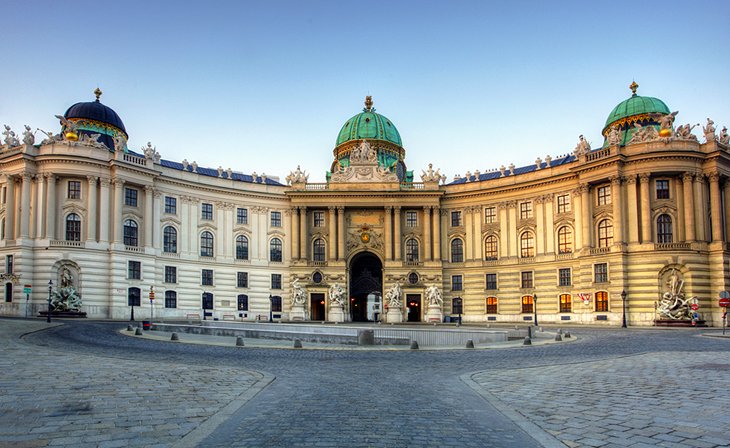
The spectacular Hofburg Palace in Vienna was for centuries the seat of Austria's monarchy, the powerful Habsburgs. Visiting this palace is one of the top things to do in Austria .
Now the President conducts state business in the same rooms that once belonged to Emperor Joseph II. Nearly every Austrian ruler since 1275 ordered additions or alterations, resulting in many different architectural influences, including Gothic, Renaissance, Baroque, Rococo, and Classicism.
Together with its many attractive squares and gardens, the entire Hofburg complex occupies 59 acres encompassing 19 courtyards and 2,600 rooms. Highlights of a visit include the Imperial Silver Collection and an array of dining services giving a taste of the lavish imperial banquets that once took place here.
Also worth seeing are the Sisi Museum , focusing on the life and times of Empress Elisabeth, and the Imperial Apartments , a series of 19 rooms once occupied by Emperor Franz Joseph and his wife.
Address: Michaelerkuppel, 1010 Vienna
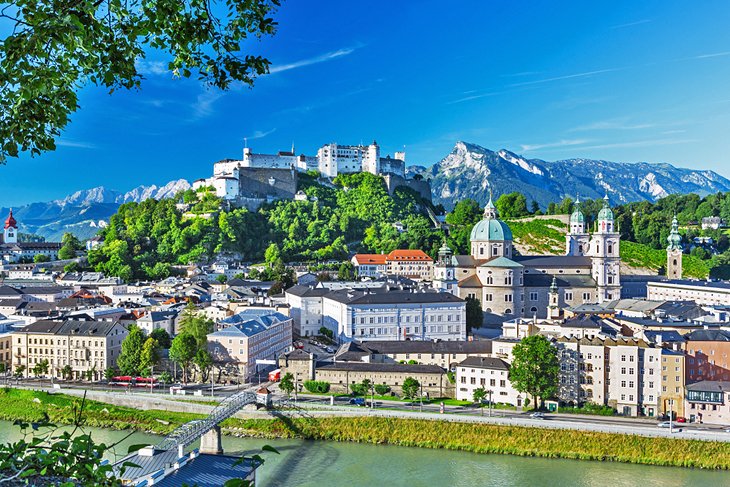
As the residence of Prince Archbishops, Salzburg was a spiritual center from the earliest days of Christianity in Europe. The Benedictine Abbey of St. Peter, in the heart of the Altstadt (Old Town) was founded by St. Rupert in AD 690 and served as the residence of the Archbishops until the early 1100s.
The Prince Archbishops employed some of the finest artists and architects of their times to build and decorate their churches, residences, and monasteries, and although these have been "updated" in the tastes of successive centuries, the medieval and Baroque buildings combine to form a beautiful old quarter to explore.
Highlights are St. Peter's Abbey and its church, along with the beautiful cemetery and its catacombs, instantly recognizable as a filming site for The Sound of Music .
Nearby is the cathedral, and wandering among its colorful Baroque burgher houses, you'll find charming squares and attractions that include the birthplace of Wolfgang Amadeus Mozart, now a museum. Above the beautiful spires and cupolas soars Salzburg's castle of Hohensalzburg, which you can reach by a funicular.
- Read More: Top-Rated Tourist Attractions & Things to Do in Salzburg
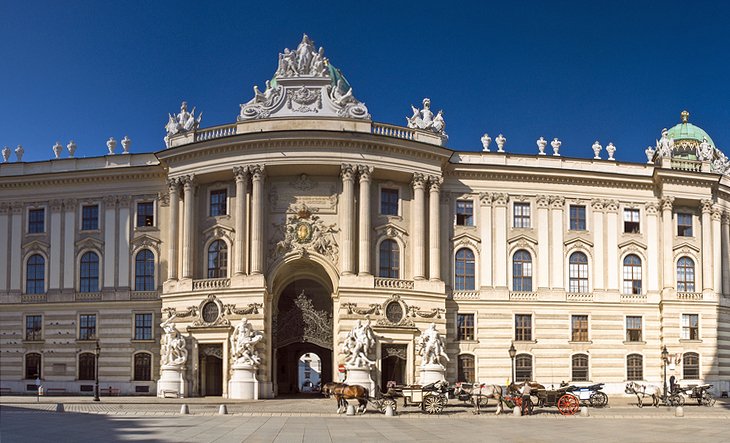
The Spanish Riding School dates back to the time of Emperor Maximilian II, the man responsible for introducing the famous Lipizzaner horses into Austria in 1562.
Today, it's one of the only places where the classical style of riding preferred by aristocracy is still practiced. Viewing the famous equestrian displays in the Baroque Winter Riding School – held here since the time of Charles VI – is one of the top things to do in Vienna .
Built in 1735, the magnificent hall was designed for the nobility to demonstrate their riding skills. Tickets to watch these magnificent animals perform their ballet are highly sought after, so book online as far in advance as possible.
Address: Michaelerplatz 1, 1010 Vienna
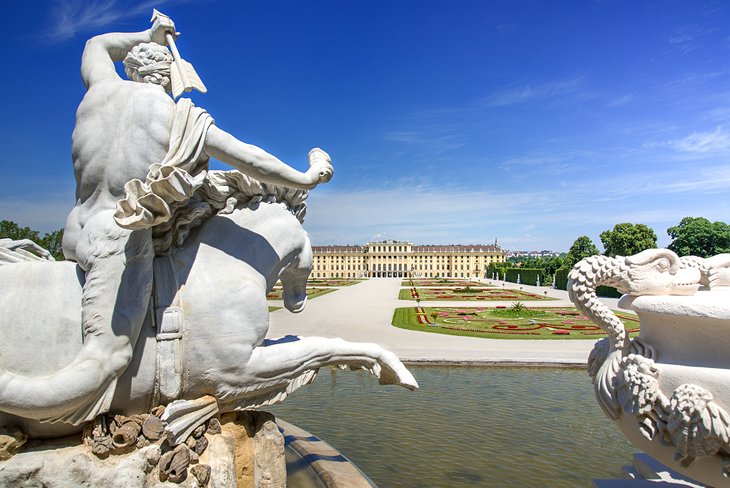
Located on Vienna's outskirts, the Baroque Schönbrunn Palace was completed in the early 1700s and was later converted into a summer residence by Empress Maria Theresa.
Highlights of a tour through the 40 rooms of the palace that are open to the public are the Royal apartments, the Great Gallery with its ornate ceiling paintings, the Million Room, and Maria Theresa's salon with its carved and gilded rosewood panels. You'll also see the spectacular Hall of Mirrors, with its gold Rococo-framed mirrors. Behind the 1,441-room palace stretch 500 acres of parks and gardens, also in the 18th-century Baroque style.
Your visit to Schönbrunn should include the many attractions spread throughout these grounds: formal gardens; a labyrinth; the Palm House, filled with tropical and exotic plants and butterflies; an Alpine garden with a farmhouse; Europe's oldest zoo; and the Classical Gloriette, a grand marble structure crowning a hill above the gardens.
A carriage museum in the former Winter Riding School displays dozens of historical state coaches and sleighs. The entire palace and gardens complex is a UNESCO World Heritage Site.
Address: Schönbrunner Schloßstraße 47, 1130 Vienna
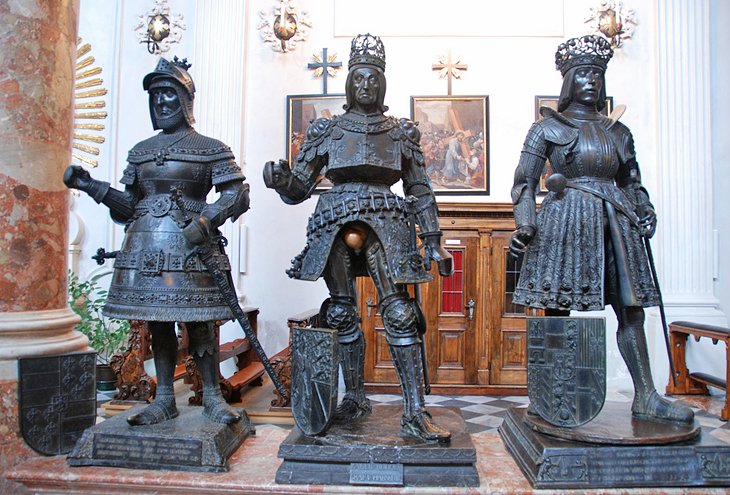
The Emperor Maximilian I, who reigned in the late 1400s and early 1500s, made Innsbruck the main residence and the seat of the Hapsburg government and, as a result, a focal point of Europe. His palace, the Hofburg, was remodeled by Empress Maria Theresa in 18th-century Baroque and Rococo styles. Highlights of a tour are the chance to view the sumptuous royal apartments, the marble Giant Hall (Riesensaal), and the painted ceilings throughout.
The highlight of the Hofkirche, or Court Church, is the spectacular Tomb of Emperor Maximilian I, who died in 1519. Widely considered the finest work of German Renaissance sculpture, the monument's central feature is the massive black marble sarcophagus with a bronze figure of the Emperor. On the sides of the sarcophagus are 24 marble reliefs depicting events in the Emperor's life, and around it stand 28 larger-than-life-size bronze statues of the Emperor's ancestors and contemporaries (look out for King Arthur).
Other pieces of sculpture include 23 bronze statues of saints from the Habsburg family and 20 bronze busts of Roman emperors.
Address: Rennweg 1/3, 6020 Innsbruck
- Read More: Top Tourist Attractions in Innsbruck & Easy Day Trips
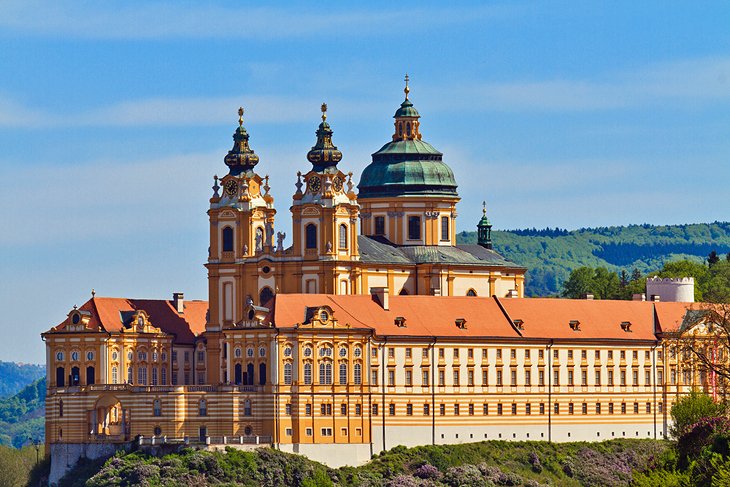
Melk Abbey is one of the world's most famous monastic sites, and its spectacular buildings are laid out around seven courtyards. The most prominent part of this massive 325-meter-long complex is the west end and its twin-towered church rising above a semicircular terrace range.
Perched on a rocky outcrop high above the town of Melk and overlooking the Danube, the abbey contains numerous other great reasons to spend a few hours touring it. These include the tomb of Saint Coloman of Stockerau; the remains of Austria's first ruling family; the House of Babenberg; and the superb 196-meter-long Imperial Corridor with its portraits of Austria's rulers, including one of the Empress Maria Theresa.
Along the way, you'll also see the Imperial Rooms with their displays relating to the abbey's history, along with statues and paintings.
Address: Abt-Berthold-Dietmayr-Straße 1, 3390 Melk
- Read More: Top-Rated Tourist Attractions in Melk
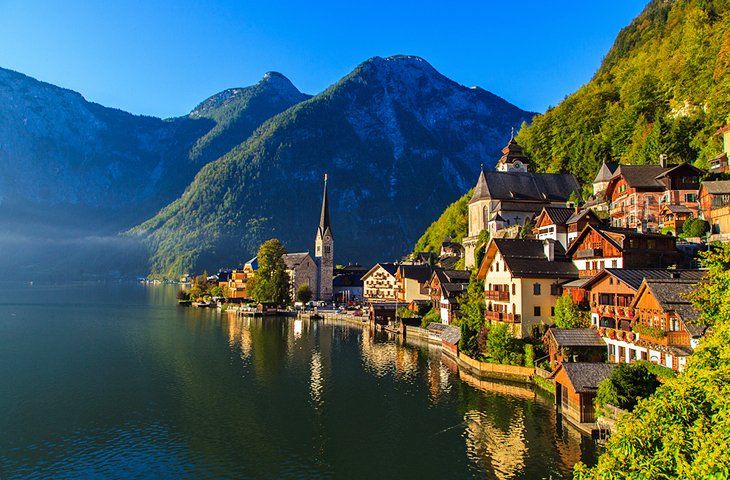
Hallstatt is undoubtedly one of the most picturesque small towns in Austria, if not Europe. It's also a good place from which to explore the spectacular Dachstein Salzkammergut region, a UNESCO World Heritage site.
The beautiful Baroque architecture testifies to Hallstatt's wealth, which is based on its long history of salt production from prehistoric times.
You can also visit the underground salt lake in the nearby Hörnerwerk cavern, or explore the Dachstein Caves , one of Europe's most impressive cavern networks, which are, in places, up to 1,174 meters deep. Highlights include the Giant Ice Cave , with its sub-zero summer temperatures and huge caverns with magnificent frozen waterfalls, and the Mammoth Cave , with its huge pipe-shaped galleries formed by an ancient underground river.
Above ground, visitors can tackle the superb 5 Fingers viewing platform, an incredible metal structure hanging over a 400-meter sheer drop with excellent views of the surrounding Alps.
- Read More: Top Tourist Attractions in Hallstatt and along the Hallstätter See
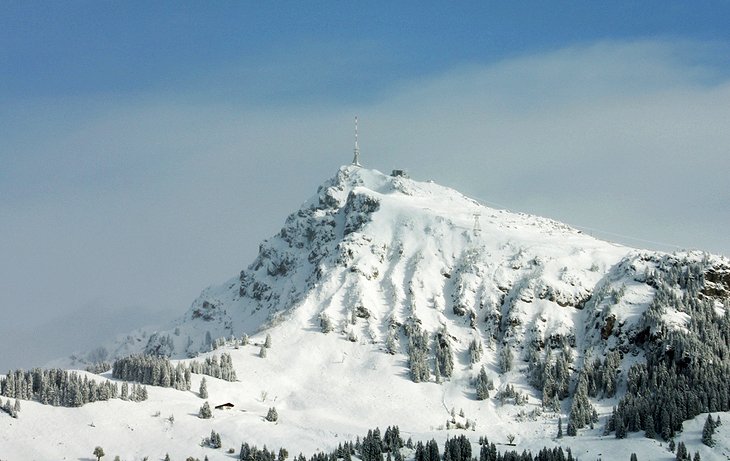
One of the best places to ski in Austria , the famed resort town of Kitzbühel spoils snow lovers with its 170 kilometers of skiable pistes and slopes dotted with little mountain huts, where they can stop for traditional Alpine snacks and warming drinks.
Although it's the site of the annual Hahnenkamm, the toughest of all downhill ski races, Kitzbühel has plenty of terrain for all skill levels in its three skiing areas, and the smallest of these, Bichlalm, is dedicated to freeriders.
But Kitzbühel is not just for skiers. With its walls and frescoed houses, and snow-covered Alps for a backdrop, the town is as pretty as Alpine villages get.
The 1,998-meter Kitzbüheler Horn that delights skiers in the winter is a favorite for mountain hikers in the summer, and you can also reach the summit by cable car via the Pletzeralm. It's considered one of the finest summit views in the Tyrol: to the south from the Radstädter Tauern to the Ötztal Alps; to the north, the nearby Kaisergebirge; to the west, the Lechtal Alps; and to the east, the Hochkönig.
To the south of the Kitzbüheler Horn rises the 1,772-meter-high Hornköpfli, also reached by cableway. In addition to the great views, on the summit, you'll find the Gipfelhaus, a unique mountaintop home; a chapel; a restaurant; and an Alpine garden.
- Read More: Top-Rated Tourist Attractions in Kitzbühel & Easy Day Trips
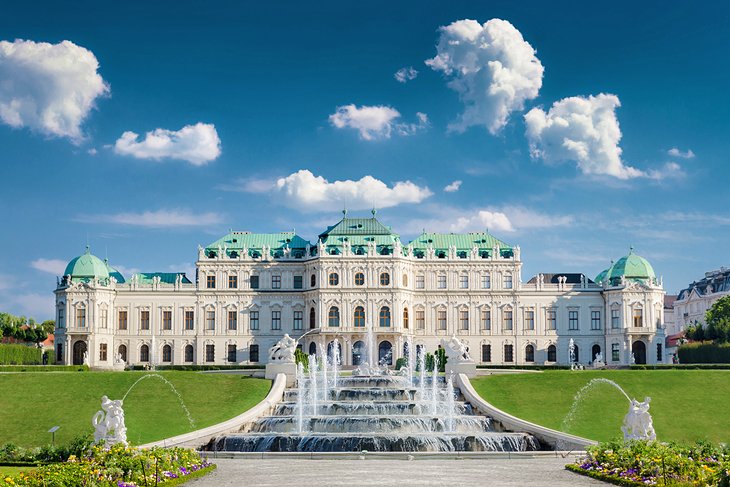
Another of Austria's most-visited palaces – and one that should definitely be included on your Vienna travel itinerary – is the spectacular Belvedere Palace (Schloss Belvedere). Referred to most often simply as "The Belvedere," this important historic site is split into two major sections: the Upper (Oberes) and Lower (Unteres) Palaces.
If you've only got time to explore one, make it the Upper Palace . Here, you'll find the largest portion of the attraction's impressive collection of artworks, as well as have the chance to view one of the country's best preserved architectural gems. Highlights include Sala Terrena, the main hall, notable for its statues and stucco vaulted ceiling; the Carlone Hall, with its ceiling fresco; the two-story Marble Hall, with its many sculptures and paintings; and the impressive Ceremonial Staircase.
The Lower Palace is no less worthy of a visit. Highlights include the Marble Gallery, with its collection of statues; the Grotesque Hall, with its numerous fine wall paintings; and a second Marble Hall, this one known for its fascinating ceiling fresco.
If you're here for the day (you should plan on it!), the palace boasts a great café and restaurant, three shops, and a great Christmas Market for those traveling in the winter months.
Address: Prinz Eugen-Straße 27, 1030 Vienna
- Read More: Exploring Vienna's Belvedere Palace: A Visitor's Guide
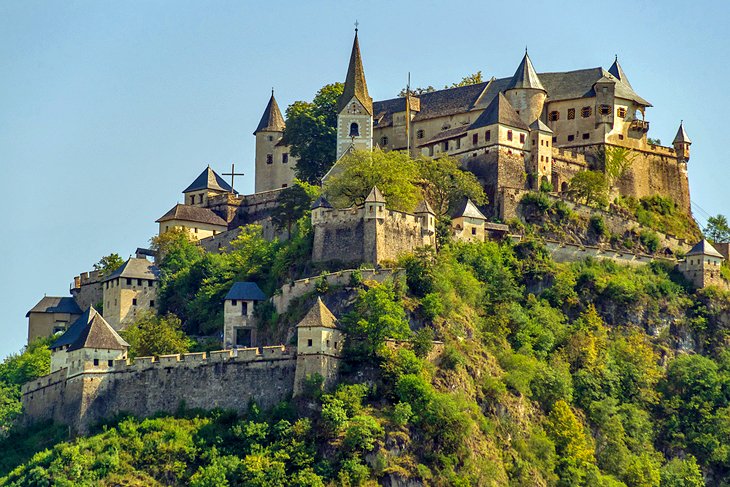
To the east of St. Veit , on a crag rising some 160-meters above the valley, sprawls the imposing Burg Hochosterwitz, Austria's most important medieval castle. After a turbulent history, the castle-first mentioned in 860 AD-was captured by the Khevenhüllers, and was enlarged in 1570 in the face of Turkish invaders. Never captured by a foe, the castle has remained in the Khevenhüller family since.
The steep access road to the castle, the Burgweg, winds its way up through the 14 defensive gates to the beautiful arcaded courtyard where you'll find the little chapel with its wall and ceiling paintings from 1570 and the church at the southwestern end of the castle with its high altar dating from 1729.
Address: Hochosterwitz 1, 9314 Launsdorf
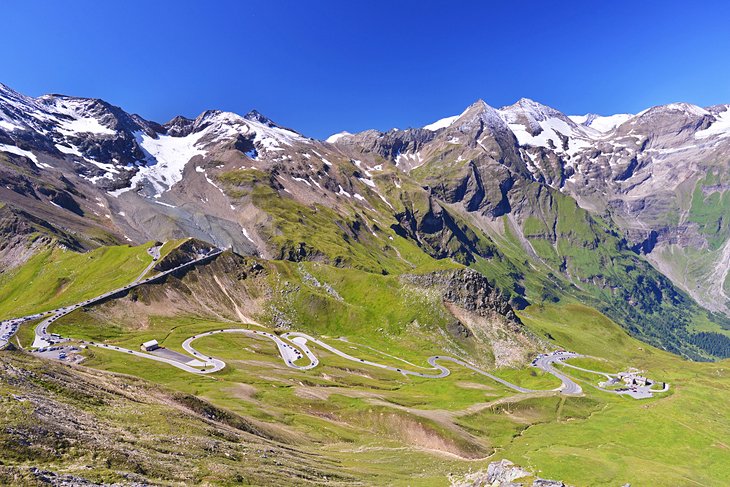
The Grossglockner Hochalpenstrasse from Bruck, in the Pinzgau, to Heiligenblut, at the foot of the Grossglockner, was constructed between 1930 and 1935. Following the route of an old Roman road, it is one of the most magnificent mountain roads in Europe .
Although its importance as a route through the Alps has declined, it's still a splendid highway through the Hohe Tauern, Austria's highest mountain massif and one of the country's outstanding attractions. Running for 22 kilometers through the mountains at an altitude of more than 2,000 meters, the road consists of a long succession of turns leading up to the summit tunnel on the Hochtor at 2,506 meters and then down into the valley on the far side.
The road is the access to the massive Hohe Tauern mountain range, where Franz-Josefs-Höhe is famous across Europe for its spectacular views. Named after a visit paid by Kaiser Franz-Josef in 1856, this wonderful vantage point stands 2,422 meters above sea level and offers incredible vistas of the surrounding country. Prominent in the view is the Grossglockner which, at 3,798 meters, is Austria's highest mountain.
Be sure to stop at the visitor center for its detailed displays relating to the area's history, as well as exhibits focusing on its glaciers and general tourist information.
Official site: www.grossglockner.at/gg/en/index
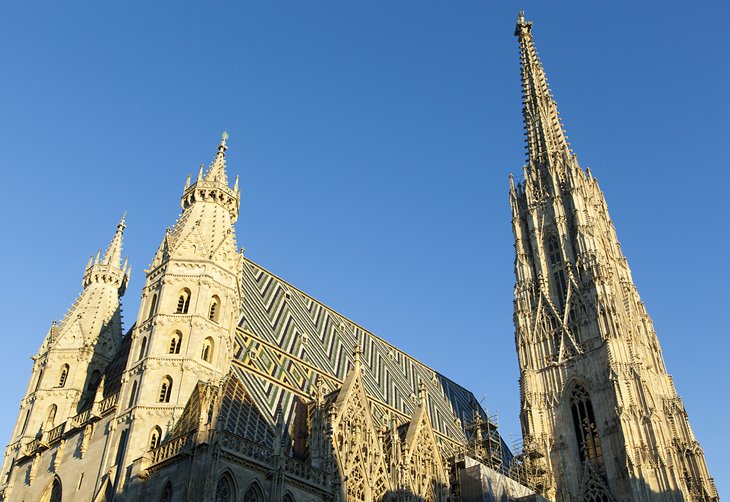
The imposing Gothic cathedral of St. Stephen's (Stephansdom) is a landmark inside Vienna's old city center. The original 12th-century Romanesque church was replaced in the 13th century by a Late Romanesque church, of which the massive gate and the Heathen Towers (Heidentürme) survive.
The later Gothic reconstruction in the 14th century added the choir and the Chapels of St. Eligius, St. Tirna, and St. Catherine, and in the following century, the famous 137-meter-high South Tower (Steffl) was constructed. After significant damage in World War II, the church was rebuilt.
The views from the Watch Room at the top of the Steffl are worth climbing its 343 steps, but you can take an elevator to a viewing platform on the North Tower, home to the massive Pummerin Bell. You won't want to miss the 14th-century catacombs and the cathedral treasury, where some of the cathedral's most important objects are displayed.
Address: Stephansplatz 3, 1010 Vienna
- Read More: Exploring St. Stephen's Cathedral, Vienna
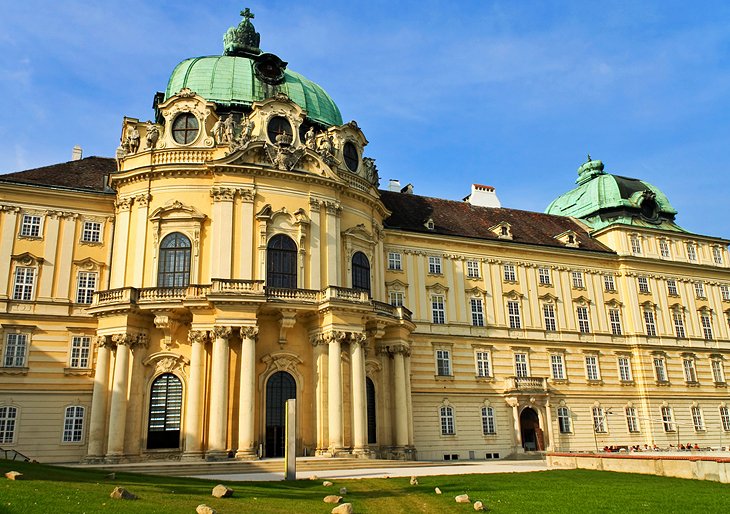
A flight of steps in lovely Klosterneuburg Abbey leads down to the 12th-century St. Leopold's Chapel where Leopold III is buried. It's also where you'll find the famous Verdun Altar. Perhaps the finest existing example of medieval enamel work, the altar consists of 51 panels of champlevé work on gilded copper depicting Biblical scenes by Nicholas of Verdun from around 1181.
Originally on the reading pulpit of the former Romanesque church, the panels were put together to form the present winged altarpiece after a fire in 1329. Four painted panels affixed to the altar in 1331 and the oldest in Austria-they were painted in Vienna before 1329-are now in the Abbey Museum.
Address: Stiftsplatz 1, 3400 Klosterneuburg
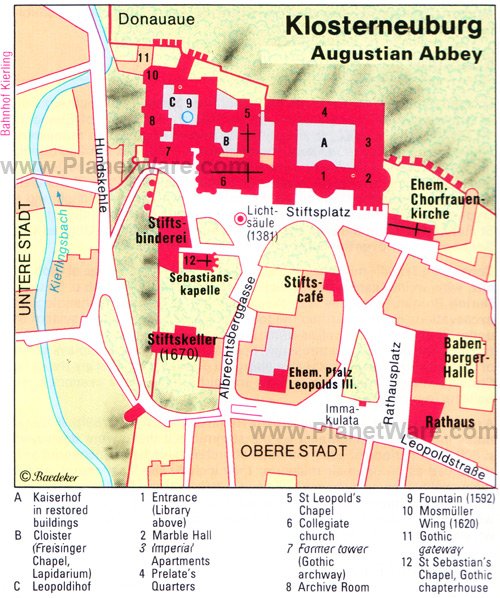
The Church of Maria Saal-more often than not referred to as Maria Saal Cathedral-is perched on a hill high above the Zollfeld and is one of the leading places of pilgrimage in the state of Carinthia in southern Austria. It was here around 750 AD that Bishop Modestus consecrated a church from which the surrounding area was Christianized.
The present twin-towered church was built in Gothic style in the first half of the 15th century on the foundations of a Roman basilica and was remodeled during the Renaissance and Baroque periods.
Highlights include the west facade with twin towers and its fine old gravestones. Particularly interesting are the 16th-century Keutschach Epitaph depicting the Coronation of Our Lady, and a Roman stone relief from around AD 300.
- Read More: Top-Rated Attractions in Klagenfurt & Easy Day Trips
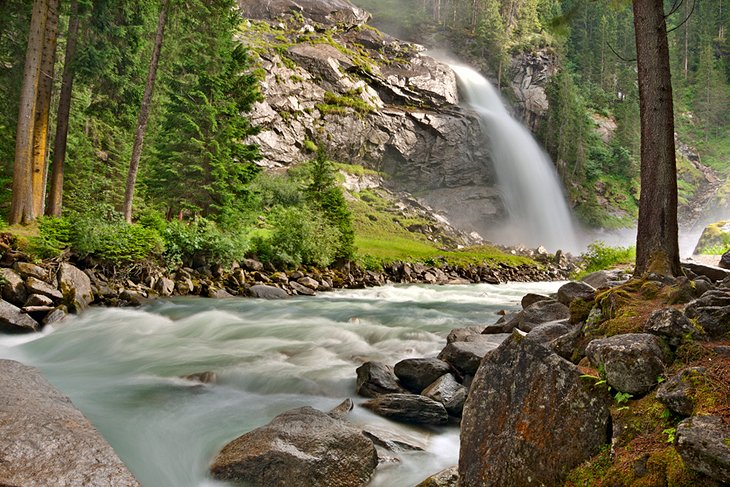
The Krimmler Ache plunges 380 meters in three tremendous cascades and makes for an excellent excursion from the nearby village of Krimml. At an altitude of 1,076 meters, Krimml-perched high above the Salzachtal in a wooded valley-is a wonderful place to stop for a few days if you're into hiking.
In addition to various excellent walks to the waterfalls, there's a rewarding climb to the Schettbrücke and continuing to the spectacular Krimmler Tauernhaus. From here, expert climbers can tackle the 2,911-meter-high Glockenkarkopf on the Italian frontier.
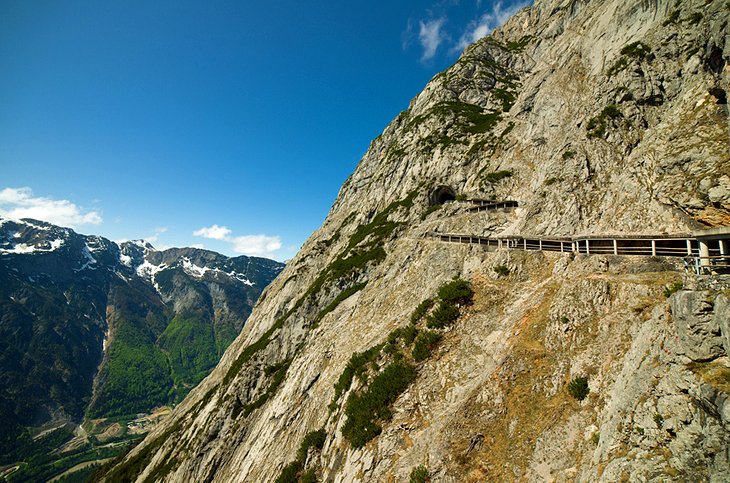
Found on the western edge of the Tennengebirge, the spectacular World of the Ice Giants is the largest system of ice caves in the world. Covering some 30,000 square meters, the caves were carved by an underground river in the Tertiary period. Discovered in 1879, they were opened to the public in 1912, and to date, an amazing 45 kilometers of the network has been explored.
After winding along the Great Ice Wall, you'll be confronted by the massive Hymir Hall with its impressive ice formations and icicles. Stone steps lead to the Eistor, or Ice Gate, a spectacular 1,775-meter-high wall of ice, and the great Ice Palace. Conducted tours last two hours, and the trip to and from the caves takes a few hours, so expect to spend the best part of a day exploring the area.
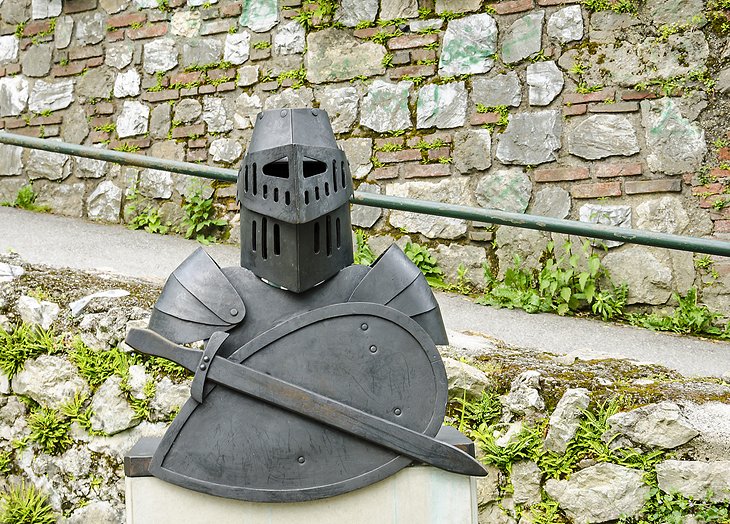
In the heart of Graz is the Landeszeughaus, the Styrian Arsenal. Built in 1644, the building houses a spectacular collection of completely preserved 17th-century arms and armor-enough, in fact, to arm 32,000 men, including helmets and weaponry.
While in Graz, you should also visit the Landhaus . Built in Renaissance style in 1557-65, its main facade is dominated by rounded windows and a veranda. The lovely arcaded courtyard has three-storied pergolas on two sides and a Renaissance fountain, while in the Knights' Hall there's a splendid stucco ceiling from 1746.
Read More: Top Tourist Attractions in Graz & Easy Day Trips
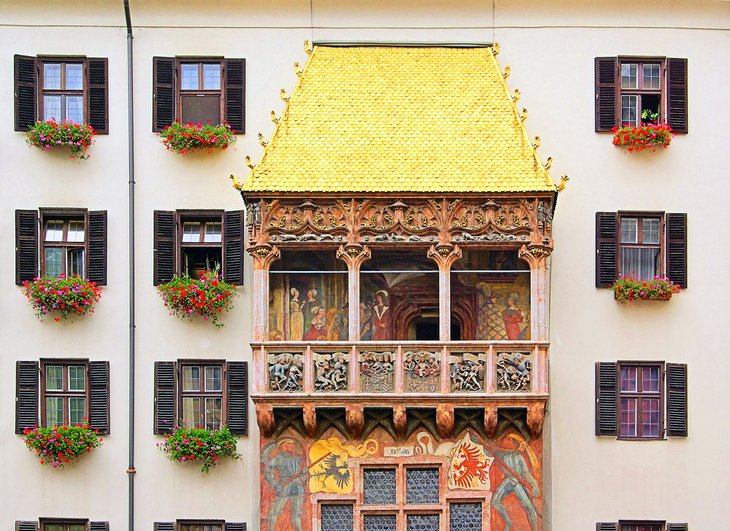
The beautiful Austrian city of Innsbruck is not only home to some of the country's best preserved architecture, it's also home to some of the most unusual and unique historic buildings. Perhaps the best known of Innsbruck's points of interest is the Golden Roof (Goldenes Dachl).
This relic from the city's rich Hapsburg past is located in the heart of Innsbruck Old Town (Altstadt), and adorns a Late Gothic oriel window of a former palace, the Neuer Hof, which was used by royalty. You can't miss this perfect selfie spot as you wander along the arcaded Herzog-Friedrich-Strasse. If you time it right (when the sun shines), the roof really does appear to glow.
Consisting of no less than 2,657 gilded copper tiles, the Golden Roof dates back to 1496, when it was added to the building to mark the marriage of Holy Roman Emperor Maximilian I, and served as a royal box, so the couple could enjoy the celebrations in the square to mark the occasion. After taking some pics, be sure to visit the Golden Roof Museum that deals with the Emperor's lasting legacy.
Be sure to spend some time wandering the winding, narrow, streets and alleys around this iconic Innsbruck attraction. In addition to the many fine old buildings here, you'll also enjoy great vistas of the many mountains that surround this beautiful Austrian city.
Address: Herzog-Friedrich-Straße 15, 6020 Innsbruck
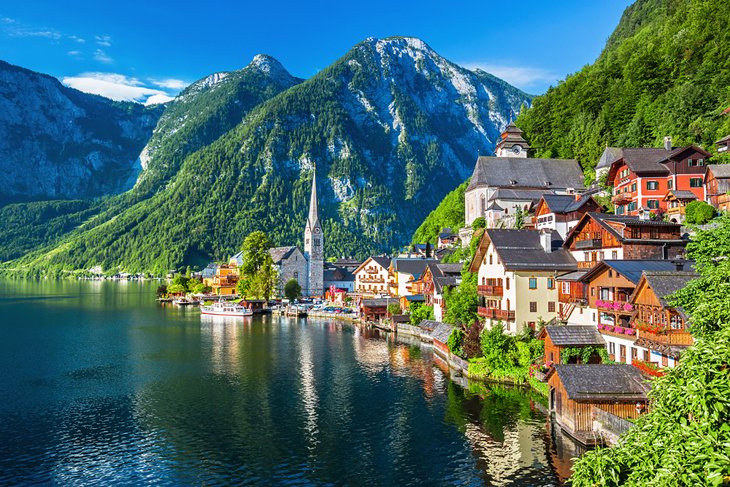
Cities or countryside? Skiing or hiking? Your plans will determine when is the best time of the year to visit Austria.
Spring: Spring can be chilly in Austria, with temperatures in the 10 to 15 degrees Celsius range in cities and much lower in the mountains. Because the season is short and only truly lasts two months (April and May), most avid outdoor enthusiasts take full advantage of it by heading to the mountains, picnicking near lakes, and discovering small towns full of history and heritage. Although spring sees lots of sunshine, the weather is also highly unpredictable, meaning you should carry an umbrella, especially during the month of April.
One of the best places to visit in Austria in April and May is the Lienz Dolomites. Hiking in this area is very popular because there are options for all levels of experience and fitness. Experienced hikers can find both short and long-distance trails, including multiple-day hikes like the Long Törlweg hike, which takes several days and requires stays in one of the alpine huts, and ups and downs across six summits with stunning panoramic views over the snowcapped peaks.
Summer: Summer is high season in Austria , with temperatures usually in the low to mid-20s Celsius, plenty of sunshine, and crisp evenings perfect for a stroll through the many picturesque towns. Flocks of tourists head to Austria during this season, which results in expensive flights, overbooked hotels, and higher prices everywhere you go.
On the plus side, the sky remains blue, and the air is filled with the smell of flowering meadows. There's no better time to photograph the Alps than in summer, as the visibility is excellent, and the snowcapped mountains can be seen from very far away.
June is the wettest of all warm months but also the one with the most festivals, including the Midsummer Night Celebration, which includes bonfires lit under the light of the moon. July brings the best weather of the Austrian summer — it's mostly dry, it's not scorching hot, and you'll get plenty of sunshine.
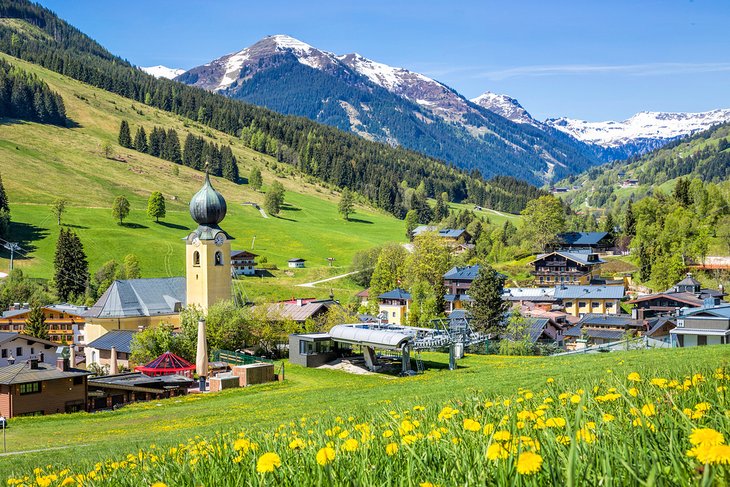
August heats up significantly , so it's a favorite time among Austrians to go swimming. Lake destinations such as Lake Plansee and Lake Hallstatt are very crowded and very expensive, and hotels are often booked a year in advance.
Fall: September and October are chilly in Austria but still not cold, with temperatures very similar to spring, except that while spring is rainy and unpredictable, autumn is actually drier and with clear skies . This is the season for cycling tours, hiking, and boating, as the trees are changing into shades of reds and yellow, and the valleys and mountains are stunning everywhere.
If you arrive in early September, you'll get warmer temperatures but without the summer crowds, as everybody is heading back home for school and work. November, though technically part of autumn, can be very cold, with temperatures in the low single digits.
Winter: Winter is technically low season in Austria, as long as you stick to the cities or even small mountain towns-the best time to go to Austria if you're looking for discounts and deals on hotels and flights . Because Austria is a major skiing destination, however, don't expect prices to go down if you're heading to the Alps or have an active outdoorsy vacation planned.
The winter season in Austria starts in November and lasts until March, with temperatures regularly in the minus because of the proximity to the Alps. The air is chilly, even when the sun is out, and snowfall is common and can be very abundant . The weeks surrounding Christmas and New Year's are busy, crowded, and much more expensive.

More on Austria
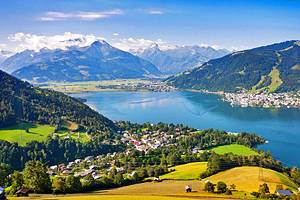
12 of the best places to visit in Austria

May 9, 2024 • 14 min read

From Zell am See to culture-packed Vienna, here are the best places to visit in Austria © auerimages / Getty Images
Imagine Austria and your mind might well drift to the lavish palaces and coffeehouses of Vienna , the snow-white peaks of the Tyrolean Alps , the river romance of the Danube and Mozart symphonies ringing out in the baroque concert halls of Salzburg .
And if this is your first visit, you’ll undoubtedly want to see all the whole darned lot and more besides. But there is far more to this pocked-sized, landlocked country than at first meets the eye.
Whether you are heading gleefully high into the glaciated mountains of Hohe Tauern National Park , tuning into the latest tech wizardry in future-focused Graz , hiding away in the little-visited wilds of the Bregenzerwald, or tripping along the vineyard-draped wine roads of southern Styria , which have more than a whisper of Tuscany about them, Austria richly rewards those who dare to deviate from the well-trodden track.
Here's our take on the best places to visit in Austria.
1. Zell am See
Sitting smugly on the shores of a bluest-blue lake and buttressed by lofty peaks, Zell am See is a knockout. The cheerful Alpine resort has sensational wilderness on its doorstep, including the glacier-capped 3203m (10,509ft) Kitzsteinhorn , where you can embark on a glacier trail, kick back on a snow beach, spend the night in an igloo, and ski well into summer. It’s also perfect for dipping into the ravishing mountains of Hohe Tauern National Park.
The resort has a real outdoor buzz in summer, with people rocking up to swim, boat, windsurf and stand-up paddleboard on the lake, cycle around or paraglide above it. If you’re a hiker, you’re in for a treat, too: a cable-car zips up to Schmittenhöhe to hook onto the 17-km (10.5-mile), moderately challenging Pinzgauer Spaziergang , one of Austria’s most memorable day hikes, with exhilarating views of the country’s highest peak, 3798m (12,461ft) Grossglockner. The resort also makes a terrific springboard for the Grossglockner High Alpine Road , a head-spinning, helter-skelter drive, with on-high views of waterfalls, lakes, glaciers and a sea of snowy Alps.
Planning tip: Dodge the peak-season crowds by visiting as soon as the snow begins to melt from the highest summits in late May or in autumn before the flakes fall.
Time your visit to Austria just right with our seasonal guide

Few cities move so effortlessly between past and present as Vienna, where Hapsburg emperors ruled the roost for 600 years. The pomp and splendor can be almost overwhelming, as you waltz through vast, exuberantly gilded palaces like the Hofburg and Schönbrunn , tour Klimt-filled galleries like the Upper Belvedere , stroll grand baroque streets, and saunter past follies and Greek gods in landscaped gardens that gaze down upon the city with a kindly eye.
The music of Mozart, Beethoven and that old romantic devil Strauss reverberates in some of the world’s most feted and opulent concert halls: the Musikverein and Staatsoper . And even going for a coffee can be a regal affair at the likes of chandelier-lit Café Central , where all the 19th-century bigwigs once hung out.
Vienna isn’t all about show. Venture beyond the big-hitters of the Innere Stadt and the Gothic whack of Stephansdom and you’ll find a liveable, loveable capital that moves to its own urban, edgy beat: in parks sprawling along the banks of the Danube, at the MuseumsQuartier , delivering a serious hit of culture in the former baroque imperial stables, and at food markets like Naschmarkt , where Vienna embraces the world in street food and spice.
Planning tip: As night descends and the city twinkles, take a self-guided tour of the monumental Ringstrasse boulevard that wraps around Vienna’s historic 1st district (Innere Stadt) on trams 1 and 2.

Other Austrian cities flick on the fairy-tale charm, but not Linz . This is where Austria leaps headfirst into the 21st century. With its gaze fixed firmly on the future, this tech-mad trailblazer has an ever-evolving cultural scene, and is making pioneering waves in avant-garde art and architecture, with a flurry of galleries and buildings at the cutting edge of design; all of which helped it snag UNESCO City of Media Arts status back in 2014.
At the top of any itinerary is Ars Electronica Center , zooming in on technology, science and digital media. Here you can interact with robots, animate digital objects, print 3D structures, turn your body into musical instruments and (virtually) travel to outer space. Its over-the-Danube rival is the rectangular glass-and-steel Lentos , a vast repository of modern art, with a stash of Warhol, Schiele, Klimt and Kokoschka originals. Both museums have a face-off of illuminations when they strikingly change color by night.
Planning tip: Tune into the art and technology of the future – from VR to biotech, robotics to media art – at the five-day Ars Electronica Festival held in early September.

4. Salzburg
On the banks of the fast-flowing, turquoise Salzach River, Salzburg looks freshly minted for Hollywood. From the moment you arrive, you’re forced to gaze up in wide-eyed wonder: at the soaring spires of its brilliantly baroque Altstadt, home to the Residenz palace , where prince-archbishops once held court, and the copper-domed cathedral ; at its high-on-a-hill, 900-year-old fortress, Festung Hohensalzburg ; at the cliffs of 540m-high (1772ft) Mönchsberg flinging up above the city; and at the white-wisped peaks of the Alps that pucker up on the horizon.
Salzburg has churned out many a legend, most notably Mozart, who was born in a bright-yellow townhouse on Getreidegasse, which now harbors a museum that’s an ode to the virtuoso. His high-note-hitting rival is Maria of The Sound of Music (1965) fame. Boundless tours and bike rides whizz around the film locations, or devise your own self-guided spin of them.
Escape the masses by taking a spirit-lifting hike along the wooded cliffs of Mönchsberg to Augustiner Bräustübl , a 400-year-old, monk-founded brewery, with Oktoberfest flavor, vaulted parlors, and a 1000-seat beer garden for quaffing foaming beers under the chestnut trees. For a breath of fresh Alpine air and trails weaving deep into the mountains, hitch a ride on the cable car up to 1853m-high (6079ft) Untersberg on the border with Bavaria.
Planning tip: Salzburg gets totally swamped in peak season. Rooms are like gold dust and rates rocket during the festival from mid-July to late August. Spring and autumn are less crowded, while winter here is cold but beautiful, particularly when Christmas markets sparkle.

5. Graz and the Styrian Wine Roads
With a castle high on a bluff, an Altstadt that’s a jumble of Renaissance courtyards and baroque palaces hinting at nearby Italy, and some strikingly avant-garde galleries, Graz is an endearingly laid-back, cultured city for dipping deeper into the oft-overlooked region of Styria in southern Austria.
Using the city as a base, you can easily strike out onto the Weinstrassen (wine roads) that vein the gently rolling hills, flower-stippled meadows, forests and vineyards that carpet the south of the province. With vineyards marching up steep hillsides and even the odd poppy and cypress tree, this is Austria’s answer to Tuscany (minus the crowds) and perfect road trip territory . As you make your way through towns like Leutschach, Ehrenhausen, Gamlitz and Berghausen, you’ll find wineries opening their doors for tastings and farmhouses offering rustic respite.
Planning tip: On the last weekend in September, the region pops many corks at its Weinlesefest (wine harvest festival).

6. Bregenzerwald
Everyone raves about the mountains of Tyrol and Salzburgerland, but there’s a lesser-known region that deserves a look-in. Huge swathes of Austria's far west, Vorarlberg , remain deliciously off-the-radar, with narrow, silent valleys carving up mighty peaks and forests. It is here that the Alpine heights of the Silvretta-Montafon give way to the wavy hills and lush dairy country of the Bregenzerwald, which in turn fall to the Bodensee (Lake Constance), where Austria rolls into Germany and Switzerland.
The Bregenzerwald, in particular, is an incredibly peaceful and deeply rural corner of the country to slip off the map for a few days, whether hiking, cycling or cross-country skiing. Roads here unzip through cow-nibbled pastures, passing limestone peaks and one ludicrously pretty timber chalet-lined village after the next. The dream is Schwarzenberg, where you can visit the Angelika Kauffmann Museum before lunch in the wood-panelled parlor at Gasthof Hirschen .
Planning tip: You’ll need own wheels to explore the region’s KäseStrasse (cheese road), which twists through valley and lush mountain meadow, linking up cheese-makers, farm shops and Schoppernau’s show dairy .
For more great driving routes check out our guide to Austria's best road trips

7. Innsbruck
The jagged Nordkette Alps rise like a theater curtain above Innsbruck , Tyrol’s rivetingly pretty capital. Here mountains whoosh up above the turquoise Inn River and seem to sneak into every picture. Can’t decide between city and slopes? Here you get the best of both, with a space-age funicular designed by architect Zaha Hadid winging you up to the Alpine heights of 2334m (7657ft) Hafelekar in mere minutes.
Innsbruck is perhaps unique in the fact you can spend the morning carving powder, hiking or dashing downhill on a mountain bike, and the afternoon with a serious hit of culture. Begin by wafting around the swanky imperial state apartments of the cupola-topped Hofburg palace. Nearby the Goldenes Dachl catches your eye, a late-Gothic oriel shimmering with 2657 fire-gilded copper tiles. But all that glitters here is not gold: just a quick bus hop from town, Swarovski Kristallwelten in Wattens delivers some serious crystal sparkle.
To ramp up the adventure, head to the neighboring village of Igls for a pulse-quickening ride on the Olympiabobbahn, where you’ll pick up speeds of 110km/h (68mph) as you pinball around 10 curves.
Planning tip: With stays of two nights or more, you’ll receive the Innsbruck Welcome Card, which entitles you to benefits like free public transport, bike rental, rides on mountain lifts, guided hikes (in summer) and snowshoe tours (in winter) .

7. The Wachau
Few places capture the soul of Austria like the Wachau , a skip west of Vienna, with mellow landscapes unfolding as harmoniously as a Strauss symphony. Here orchards and vineyards rib terraced slopes that stagger down to the meandering River Danube, and trails waltz through field and forest to medieval castles romantically poised on hillsides. With one of the country’s most exciting food and wine scenes, paths that are a joy to explore on foot or by bike, and poetic landscapes, this stretch of the Danube Valley is so darned scenic that it has been granted UNESCO World Heritage status.
The big-hitter culturally is Stift Melk , a twin-spired, onion-domed baroque stunner of an abbey, with a sunny yellow facade and flamboyantly frescoed monastery church. Beyond this, you’ll want to see the fairy-tale that is Dürnstein’s ruined castle , where Richard the Lionheart was locked up in the late 12th century for insulting Leopold V, and the low-key village of Spitz, topped off by the 1000-Eimer-Berg, so-named for its ability to fill 1000 buckets of wine each season.
Planning tip: Trains run from Vienna to Krems and Melk in an hour, making this a cracking day trip from the capital . Rent wheels with nextbike to pedal along the river and through wine country on a stretch of the Danube Cycle Path.
Looking for other day trips from Vienna? Here are some of the best
9. Bad Gastein
Smuggled away in a wildly romantic valley in the glacier-capped Hohe Tauern mountains, Bad Gastein is an instant heart-stealer, with belle époque villas that evoke the grace of a bygone age clinging to sheer, forested slopes, and a 341m (1119ft) waterfall plummeting over cliffs. Over the centuries the town has beguiled everyone – from beauty-conscious Romans to romantic souls such as Schubert and Klimt and royals like Empress Elisabeth – for the miraculous healing powers of its radon-laced thermal hot springs.
Today you can take these same waters at the grotto-filled Felsentherme and architecturally innovative Alpentherme baths. Or, for greater impact, go deep into the bowels of the Gasteiner Heilstollen , a medieval gold mine turned health center, to absorb the radon (taster sessions are available), said to cure all manner of ills from arthritis to fibromyalgia.
One look at the mountains that fling up above the valley and you’ll be itching to head higher. A gondola swings up to 2200m (7218ft) Stubnerkogel , where you can hike across a 140m-long (459ft) suspension bridge for out-of-this-world views deep into the snowy Hohe Tauern peaks, or ski in winter.
Planning tip: Stay overnight and you get the Gastein Card, which entitles you to free use of local public transport, free guided half-day and full-day hikes, plus substantial discounts on mountain lifts, thermal baths and activities.

10. Salzkammergut Lakes
If you’ve ever swooned over a lake scene in The Sound of Music it was probably filmed in the Salzkammergut , a fantasy region of jewel-colored Alpine lakes, wildflower-strewn valleys and peaks topping out near the 3000m (9845ft) mark. Should you only have time to see one lake, make it crazily pretty Hallstatt , a heavenly splash of glassy green-blue water, rimmed by the Dachstein Mountains. So gorgeous that it inspired the kingdom of Arendelle in the 2013-Disney blockbuster Frozen , its looks haven’t gone unnoticed and the village’s streets are clogged in summer. A funicular floats up to UNESCO-listed Salzwelten , the world’s oldest salt mines, which peer back on 7000 years of history and once produced the region’s "white gold".
The region rewards those who don’t rush straight off: allow longer so you can soak in thermal baths in spa town Bad Ischl, bathe in the warm waters of crescent-shaped Mondsee , follow in pilgrim’s footsteps to Wolfgangsee, and explore the icy underworld of the Dachstein Caves in Obertraun.
Planning tip: While July to early September are ideal for lake swimming (the water is mighty chilly at other times of the year), you might prefer to visit in the shoulder seasons – spring and autumn are glorious – to escape the selfie stick-wielding throngs and enjoy the lakes in peace.
11. Steyr and Nationalpark Kalkalpen
So you want to go properly off piste? Upper Austria is the place to do just that. Somehow this region has managed to slip under the tourist radar – making it ripe for an away-from-the-crowds adventure. This province has its own quiet, lingering beauty, with golden wheat fields giving way to patchwork fields and apple orchards that in turn rise to mountains rolling to the Czech border. It’s a joy to explore on foot or by bike, with cycle paths hugging river banks, rambling farms selling homegrown Most (cider) and mellow autumn mists.
The fairest town by far is Steyr, which composer Franz Schubert called "inconceivably lovely" and used as the inspiration for his sprightly "Trout Quintet". At the confluence of the swiftly flowing Enns and Steyr rivers, this pretty town of cobblestones and pastel-hued baroque houses makes a brilliant base for diving into the rest of the region.
Planning tip: For hiking, mountain-biking and rock climbing action, the Nationalpark Kalkalpen ’s limestone peaks, gorges, and high moors are within easy striking distance.
12. St Anton am Arlberg
In the beginning there was St Anton am Arlberg... In the place where the country’s first ski club was founded in 1901 and downhill skiing was born, the Austrian Alps take a huge leap into wilder heights. Overshadowed by a real beast of a mountain called Valluga (2809m/9216ft), this resort makes even veteran skiers quiver in their boots with some of Austria’s steepest on- and off-piste skiing . The ultimate challenge is the Run of Fame. One of the longest circuits in the Alps, this 85km (53-mile) marathon ski wraps up the entire Arlberg arena and covers 18km (11 vertical miles). With 305km (190 miles) of slopes to pound, the skiing here is the stuff of legend. And the après-ski scene is bonkers – people here like to party as hard as they play.
While winter is the big deal for most, the outdoor action ramps up in summer too, with hiking trails heading from peak to glorious peak, and adventure pros H2O taking you white water rafting on the fast-flowing Inn River, canyoning in the surrounding gorges, tubing, and mountain biking. If mindfulness is more your bag, mountain yoga is having a moment here too, with the resort playing host to a peak-gazing, mood-lifting, body-bending festival in early September.
Planning tip: From mid-June to early October, all guests receive the handy St Anton Summer Card , including benefits like free use of public transport, entrance to local museums, guided hikes, yoga classes and swimming pool entry.
This article was first published Nov 2, 2021 and updated May 9, 2024.
Explore related stories

Architecture
Aug 2, 2024 • 8 min read
Despite its luxe palaces and ornate architecture, a trip to Vienna doesn't have to blow the budget – there's plenty to do that's completely free.

Jul 31, 2024 • 5 min read

Jul 19, 2024 • 7 min read

Jul 16, 2024 • 6 min read

Jul 1, 2024 • 10 min read

Jun 12, 2024 • 12 min read
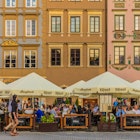
Jun 11, 2024 • 7 min read

May 25, 2024 • 7 min read

May 21, 2024 • 4 min read

May 20, 2024 • 6 min read

Touropia Travel
Discover the World
20 Top Tourist Attractions in Austria
By Spencer Leasca · Last updated on May 4, 2024
Austria is a country rich with history, beautiful places, traditions and activities that are distinct to the area. Along with neighboring Switzerland, it is the winter sports capital of Europe.
However, Austria is just as popular for summer tourists who visit its stunning palaces and lake side villages and hike in the magnificent scenery of the Alps.
Then, of course, there is the little matter of the Grossglockner Alpine Road, arguably the most scenic drive in the world and Eisriesenwelt, the largest ice cave in the world.
Throw in Krimml Falls, world-class cities like Vienna and Salzburg and a musical heritage that includes Mozart, Strauss and Schubert, and you have one of Europe’s finest tourist destinations. In order to help guide you in building a list of things to do, below are some of the top tourist attractions in Austria that are sure to make your trip extra special.
20. St. Wolfgang
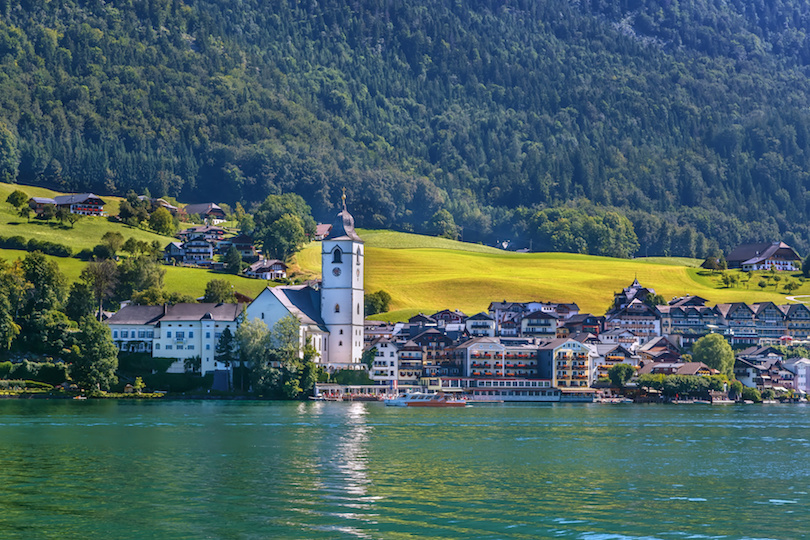
St. Wolfgang is a beautiful market town within Salzkammergut, Austria’s famous Lake District. Nestled on the scenic shores of Wolfgangsee Lake, it features several colourful houses along its picture-perfect shoreline and 1783 meter-high Mount Schafberg that towers imperiously above it.
You can get to the top of this mountain by riding the quaint cog Schafberg Railway. Make sure this is one of the first things you do on arrival at St Wolfgang, as you will enjoy spectacular views of seven separate lakes.
Situated just a stone’s throw from Salzburg, the town is also home to the impressive Mirabell Palace. This palace features beautiful grounds that you can walk around. Fans of The Sound of Music might recognize the fountains here as they feature in the film.
19. Schloss Esterhàzy in Eisenstadt
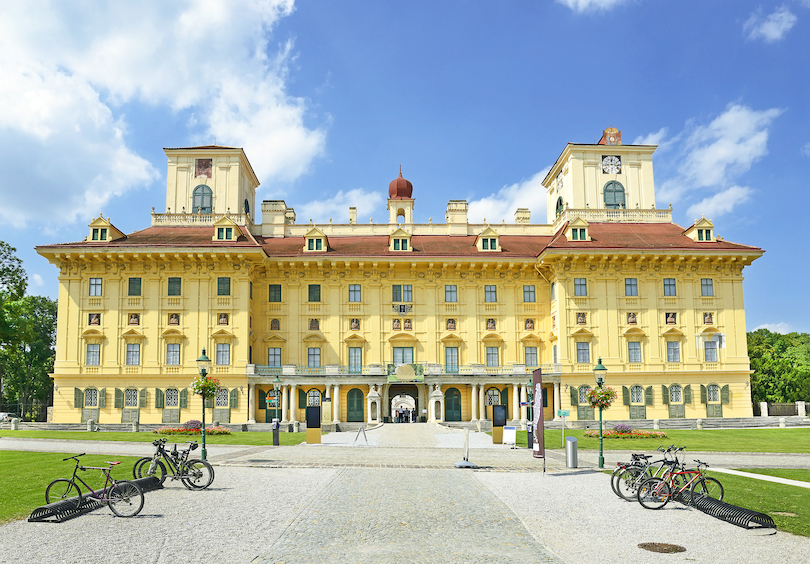
Eisenstadt is a charming city which serves as the capital of Burgenland. Located near the Hungarian border, it is worth coming here for the magnificent Esterházy Palace.
The most distinguished building in the city, the palace boasts beautifully manicured gardens and houses several significant cultural treasures privately collected by the Esterházy family – who owns the property.
Visitors can partake in a self-guided or guided tour of several rooms within the palace, which feature priceless artworks and furnishings. They can also walk within its immaculate grounds and visit its gift shop and wine museum.
The palace is also home to an excellent interactive exhibition showcasing the work of the composer Joseph Haydn. The stunning Haydnsaal concert hall also hosts world-class classical music performances.
18. Krimml Falls
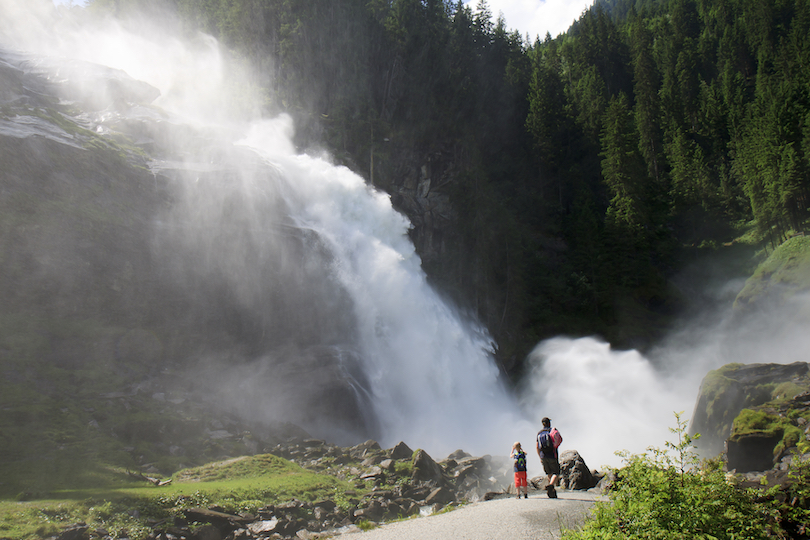
Even in a country blessed with outstanding natural beauty the Krimml Waterfalls manage to stand out.
Totaling 380-metres, the spectacular cascade is the highest and arguably the most beautiful waterfall in Austria. To visit it you will have to head to the High Tauern National Park within Salzburg State. Once there you should make your way to the charming village of Krimni, which you will find on the Krimmler Ache river.
Starting from the Krimmler Ache valley, the picturesque waterfall plunges into three separate sections. The top and bottom sections are both roughly 140 meters in length each, while the middle section is 100 meters. To get better views of them a path leads you to each of these different sections.
17. Hochosterwitz Castle
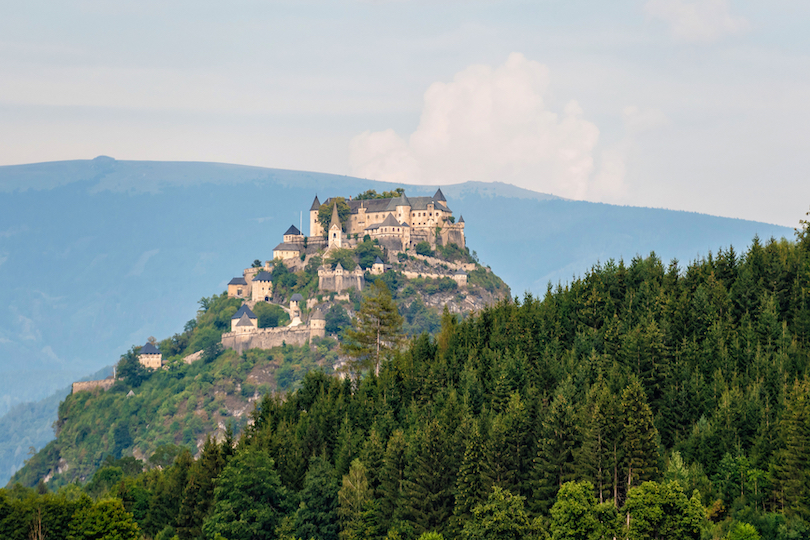
For those who enjoy medieval architecture, Hochosterwitz Castle is a must-see destination. The notable landmark sits on a towering dolomite rock close to the Sankt Georgen am Längsee in Carinthia . But it is so prominent you can see it up to 30 km away on a clear day.
Although privately owned, the public can visit parts of the castle between Easter and October. Extending for 620 meters, you will navigate 14 gates along its walkway that protected it from attack back in the day. Once you get there, you will see several artworks, weapons and exhibits.
They include an 8-foot-tall set of armor worn by Burghauptmann Schenk. A larger-than-life character believed to have been the inspiration behind Gregor Clegane, The Mountain, in ‘Game of Thrones’.
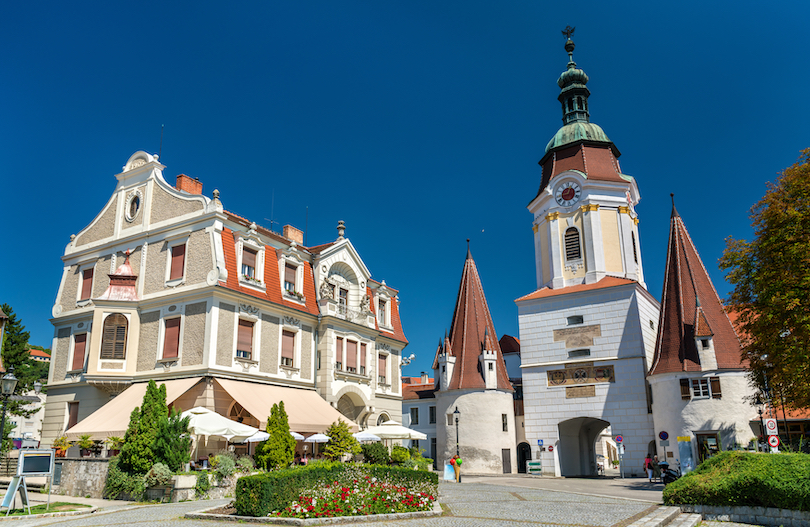
Located west of Vienna, the historic city of Krems marks the point where the blue Danube and the Krems rivers converge at the beginning of the Wachau Valley.
Krems boasts a historic city center, and the pedestrian friendly layout encourages exploring the ancient city gates and the castle called Gozzoburg. Besides these things to do, Krems has a reputation for its impressive wine industry, and many visitors come to explore exactly that.
The Weinstadmuseum is a wine-focused museum in the center of town, and there travelers can get great recommendations for local wineries and tasting rooms dotted throughout Krems and along the banks of the Danube.
15. Eisriesenwelt Cave
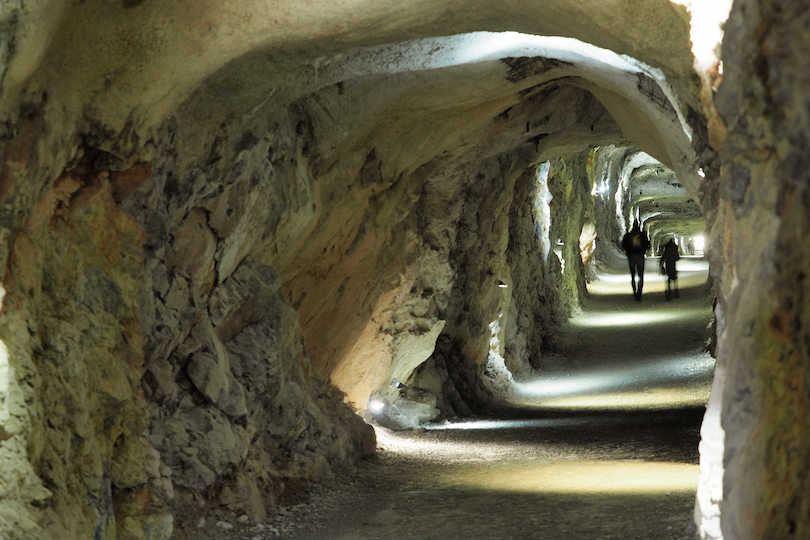
Over in Werfen, about 40 km from Salzburg, resides the Eisriesenwelt cave.
Nestled within Hochkogel Mountain, it is the world’s largest ice cave, stretching for 26 miles along the Alps’ Tenneggebirge section. Translating, quite aptly, as ‘World of the Ice Giants’, the ice and limestone cave is only sheathed for its first 960 meters in ice. But thankfully, this is the section that is accessible to the public for viewing.
To get to the cave, you will have to hike and then ride a cable car to its entrance. However, once you are there, you will be able to go on a guided tour that showcases a host of captivating frozen waterfalls and ice formations, much of them by candlelight.
14. Vienna State Opera
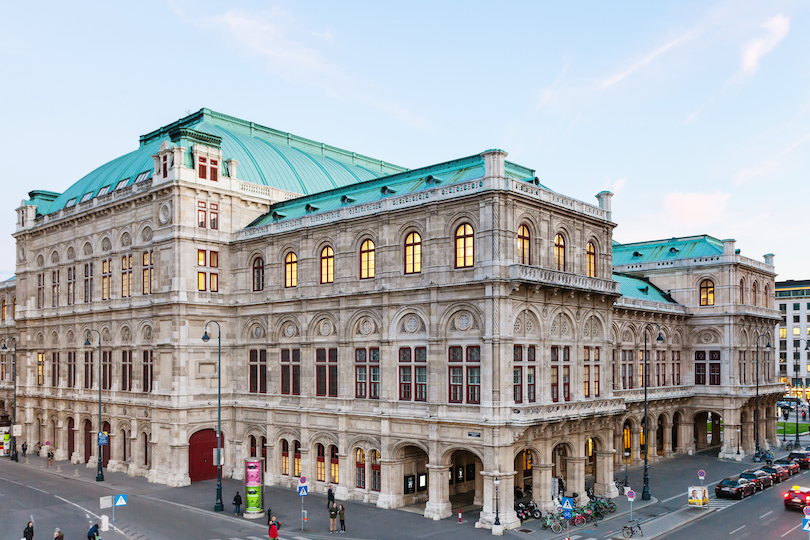
In Vienna’s inner city is the Ringstraße, or Ring Road, along which countless landmarks are found. Just one of these landmarks is the Vienna State Opera House.
The structure itself was constructed in the 19th century in a Neo-Renaissance style. Marble staircases and painted ceilings make this is a truly grand destination. After bombing in World War II, the structure was rebuilt to be true to the original style.
While a tour of the building is wonderful, what is even better is attending a musical performance or even a ball, many of which are held annually at the Vienna State Opera.
See also: Where to Stay in Vienna
13. Mirabell Palace
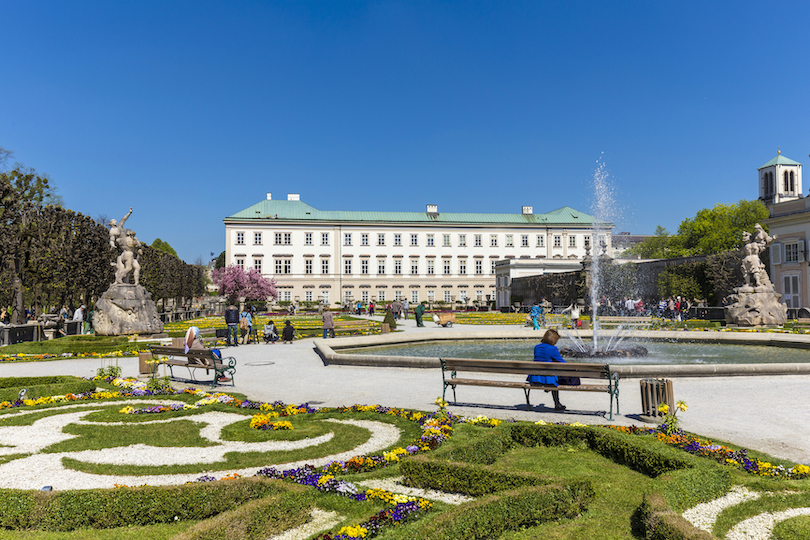
The Mirabell Palace in Salzburg, known to the locals as Schloss Mirabell, is a beautiful early 16th century structure built by Prince-Archbishop Wolf Dietrich for his mistress. Considerable renovations in the 17th century mean that the palace now boasts a baroque interior with countless embellishments.
The interior is laden with marble, stuccoes and enormous frescoes on the walls. The Marble Hall is noteworthy for being among the most picturesque wedding spots in the city. Outside, the gardens are every bit as impressive, and the sculpture collection is world-class.
12. Schafberg
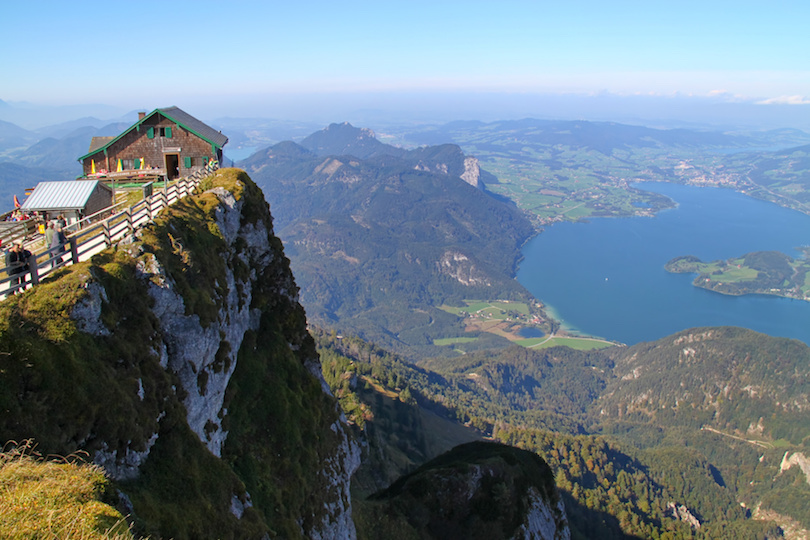
In the heart of the Salzkammergut Mountains is one peak called Schafberg. This mountain is part of the Limestone Alps, and it boasts a truly incredible view overlooking the Wolfgangsee Lake.
What makes Schafberg a top destination is that it is easily accessible with a steam railway. Known as the Schafbergbahn, this train chugs from the town of St Wolfgang all the way to the mountain’s summit. Featured in the Sound of Music, the railway is an iconic attraction that shouldn’t be missed.
11. Hohenwerfen Castle
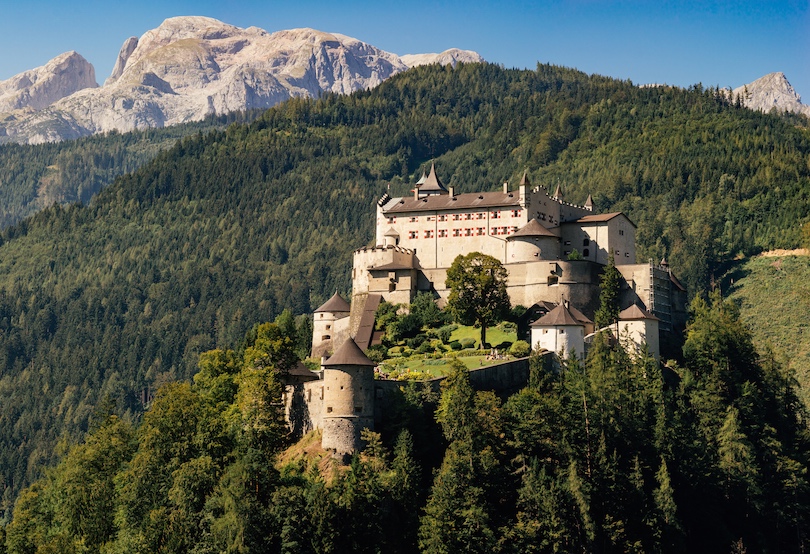
Whilst visiting the Eisriesenwelt Cave near Werfen, you should take the opportunity to check out the Hohenwerfen Castle too.
Flanked by the Tennen Mountains and the Berchtesgaden Alps, this impressive medieval rock castle enjoys a spectacular position overlooking the Salzach valley from atop a 623-metre precipice. Both of which provide a breathtaking backdrop.
Visitors can enjoy a guided tour of the castle or take in one of the many birds of prey demonstrations they run. Children can also partake in a fun rally quiz or enjoy medieval games like archery, bowling, walking on stilts or throwing rings.
Built over 900 years ago, you may recognize the fortress for its prominent role in the films Where Eagles Dare and The Sound of Music.
10. Zell am See
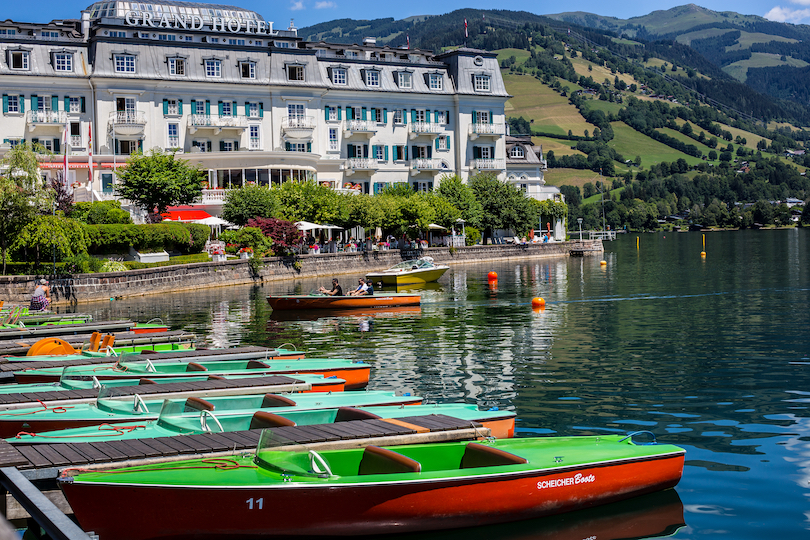
If you want to go skiing, there is no better place to do it in Austria than at Zell am See. This beautiful lakeside town offers more than 80 miles of powdery slopes for visitors to enjoy.
Irrespective of whether you are at a novice, intermediate or professional level, there is a suitable slope for you. For those who prefer cross-country skiing, there are 125 miles of pristine trails to explore.
Zeller See, the lake around which the city city exists, is blue, clear and the picture-perfect example of an Alpine lake.
A network of lifts and trails from the town takes you up to the Schmittenhöhe mountain. Via them, you can access the summit of the spectacular Kitzsteinhorn glacier, where the Gipfelwelt 3000 panoramic platform will provide you with incredible panoramic views. These include Grossglockner mountain and Hohe Tauern National Park.
9. Melk Abbey
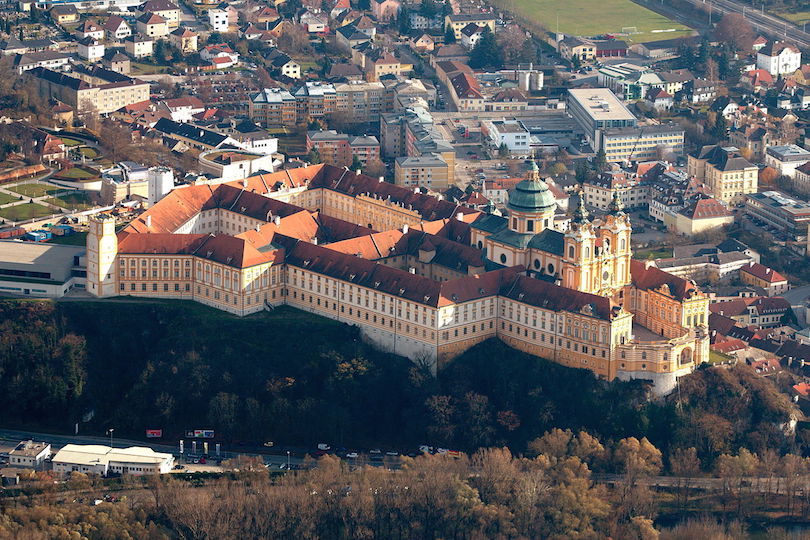
Presiding over the quaint town of Melk, which lies within the Lower Austria region, the Melk Abbey is a culturally significant place to visit.
A Benedictine abbey that dates back to the 11th century. It sits on a craggy outcrop that presides over the Danube river. The abbey is notable for housing the final resting places of Saint Coloman of Stockerau and various members associated with the House of Babenberg – the country’s first prominent ruling dynasty.
Since the 1100s, the abbey has also run an acclaimed monastic school. Alumnae have included composers Gregor Werner and Carl Zeller, painters Albert Paris Gütersloh and Leopold Blauensteiner and poet Friedrich Halm.
If you want to learn more about its legacy, hour-long guided tours are well worth booking.
8. Seefeld in Tyrol
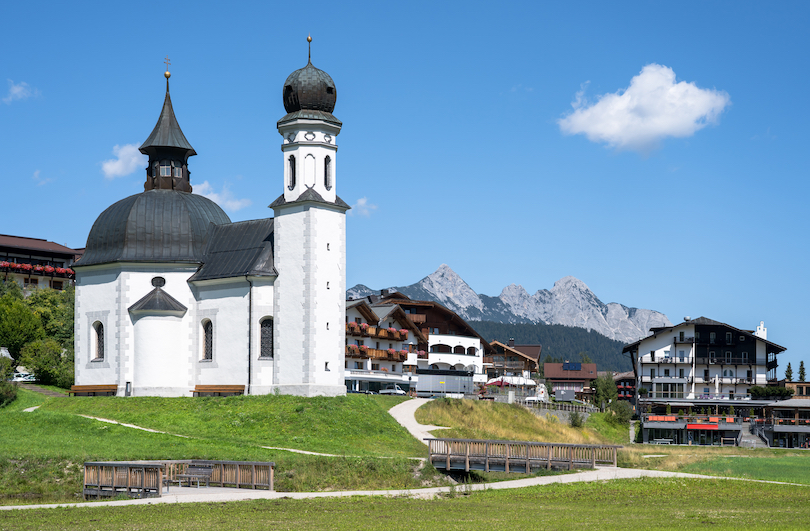
Another excellent spot for skiing in Austria is the Alpine town of Seefeld.
Found in the Tyrol region, it lies on a spectacular plateau that sits high above Innsbruck. Ringed by the Karwendel and Wetterstein ranges, the area is renowned for its world-class cross-country skiing.
It is a regular on the World Cup circuit and hosted events at the Winter Olympics in 1964 and 1976. However, far from being an elite venue, it has plenty of flatter areas for beginners to find their feet.
Away from the slopes, the town has other things to do and enchanting landmarks. These include a small baroque 1600s church – the Seekirchl – which features an onion dome. There is also an eye-catching hilltop circle of 12 huge stones representing the apostles.
7. Hohensalzburg Castle
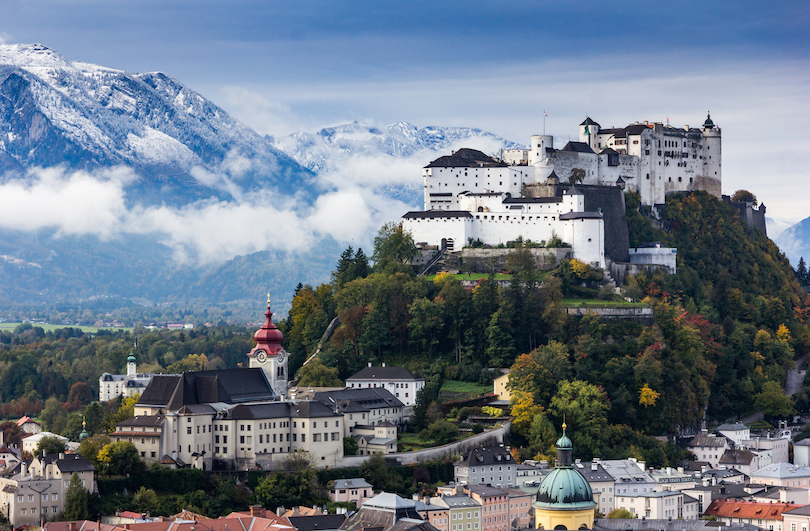
The Hohensalzburg Fortress is undoubtedly one of Europe’s best-preserved castles. A truly stunning piece of medieval architecture, visiting Hohensalzburg Castle is one of the top things to do in Austria.
Perched at an altitude of 506 meters atop the Festungsberg, this impressive medieval fortress lies in the heart of Salzburg . Covering an area of 250 metres by 150 metres, it is one of the largest of its type still standing on the continent.
During WWI, the castle incarcerated Italian prisoners of war. While in 1938, it housed Nazi activities before Germany annexed Austria.
You can get to the castle by funicular, which runs every ten minutes and only takes a minute to ascend to its hilltop. It features several notable points of interest, including a chapel, the Golden Hall and a bed chamber, which you can view on a guided tour.
6. Hofburg Imperial Palace
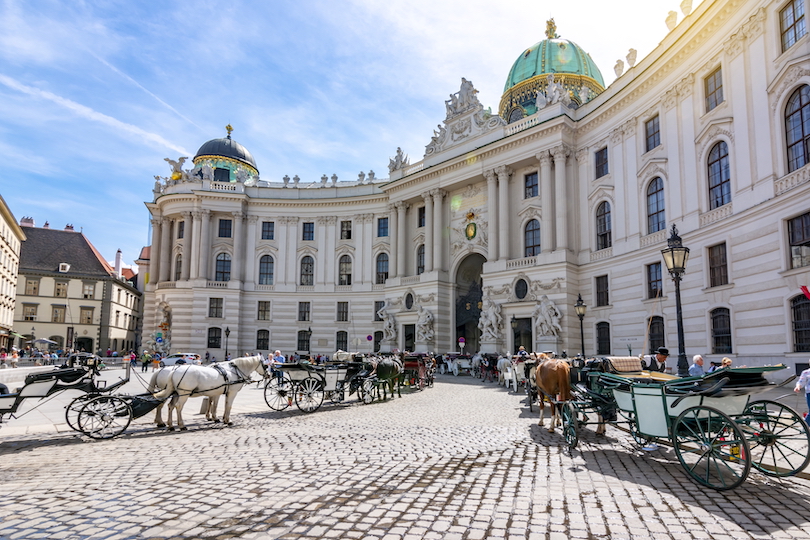
One of Vienna’s most stunning attractions is the Hofburg Imperial Palace. This is a complex that served as the official royal residence of the Habsburgs until the First World War.
The palace was built in stages, adding on places like the stables, the library and the Spanish Riding School as power and money accumulated for the Habsburgs.
From the entrance in the Michaelerplatz, visitors can tour several onsite museums and even get a look at former royal apartments as well as the glittering Imperial Silver Collection.
5. Innsbruck Altstadt
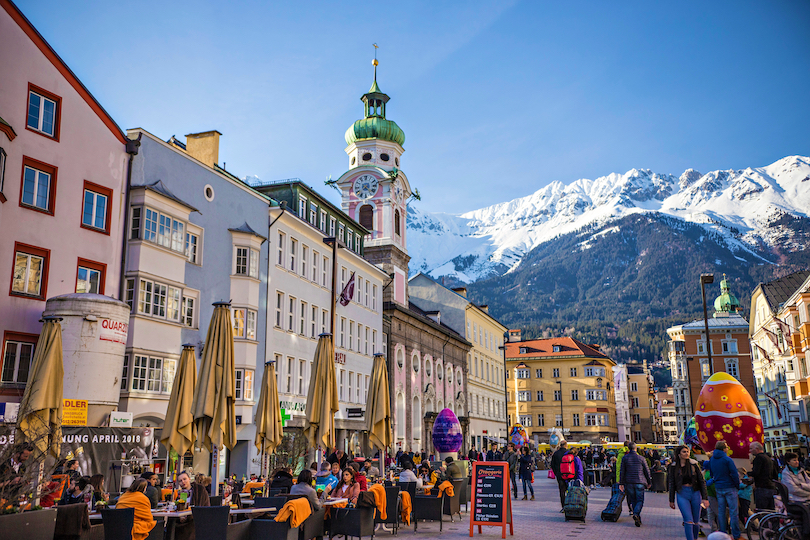
Surrounded by snowcapped mountains, Innsbruck makes you feel quite insignificant in the midst of nature’s striking Alpine mountain range. Said to have a duel personality, the area offers both pristine landscapes and a sophisticated urban center.
Altstadt, the medieval town of Innsbruck, draws you in with its unique architecture and many shops. While you are strolling the streets of the Altstadt you can visit one of its famous landmark, the Golden Roof.
This house was constructed for the Holy Roman Emperor, Maximilian I, and it was decorated with thousands of gilded copper tiles that create the appearance of pure gold.
4. St Anton am Arlberg
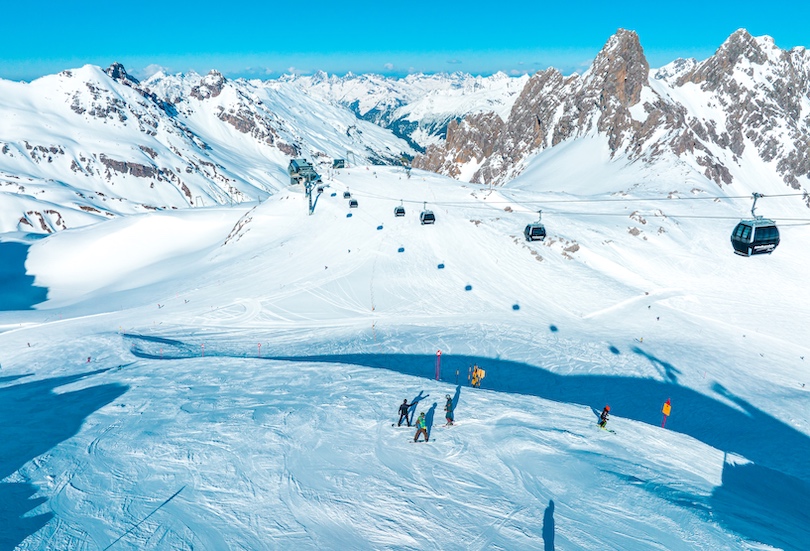
For some people, the ONLY place to go skiing in Austria is St. Anton am Arlberg.
A premier ski resort in the Tyrolean Alps, it is often referred to as the ‘cradle of alpine skiing’ because of its role in inventing the sport. Boasting a massive off-piste landscape, consistent deep snow and pure powder, you can conveniently get to the slopes of Rendl and Valluga by cable cars and lifts.
When not playing on the slopes, make a point to check out the Museum St. Anton, which provides a fascinating insight into how the local ski scene developed over the years. At night, the village is also known for its bustling après-ski scene, which comes alive during live music performances.
3. Grossglockner Alpine Road
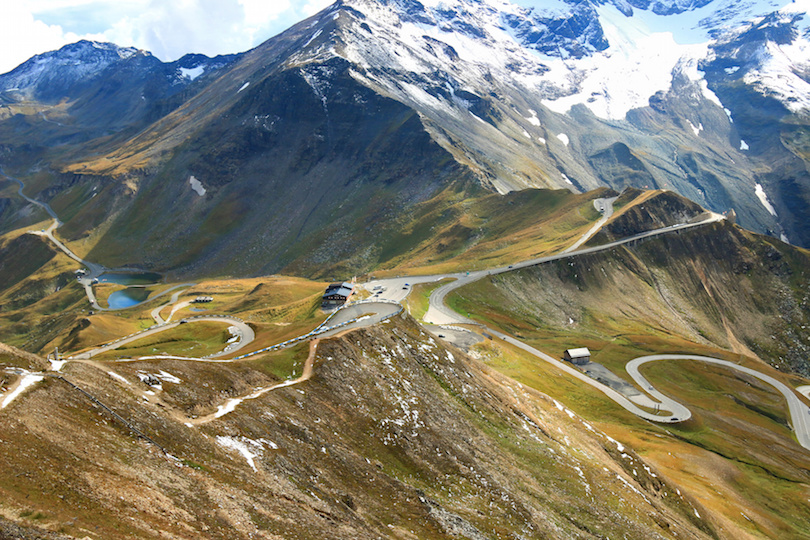
If you love going for scenic drives, then you should not miss the opportunity to cruise along the Grossglockner Alpine Road.
Austria’s highest tarmacked mountain road pass showcases the magnificence of the Austrian Alps through a 48 km toll road that features no less than 36 hairpin bends!
Undoubtedly one of the most scenic drives in the world, the landscape is truly mesmeric. Winding a stunning course through a rocky terrain of wine-bottle green alpine pastures, you will stop several times to take it all in.
Due to the weather, the Grossglockner Alpine Road is usually only open between May and October. Named after the highest mountain in the country, it connects Bruck in Salzburg with Heiligenblut in Carinthia. The road has a maximum elevation of 2,504 meters.
2. Hallstatt
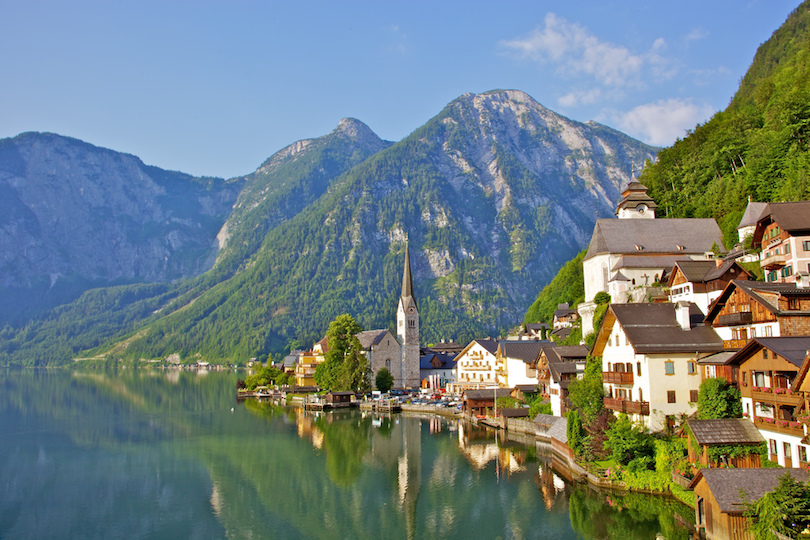
They say imitation is the sincerest form of flattery. So the fact the Chinese have made a copy of the picturesque village of Hallstatt should give you an indication of its appeal.
Situated around the western shore of Lake Hallstatt, the village lies within the mountainous region of Salzkammergut. It is known for its Alpine houses dating back to the 16th century and the spectacular, subterranean salt lake at a primordial salt mine called Salzwelten.
A funicular railway will take you up there, as well as the Skywalk Hallstatt viewing platform, which showcases tremendous panoramic views. A trail will also take you to the Echern Valley glacier garden. There you can navigate glacial potholes and see the stunning Waldbachstrub Waterfall.
1. Schönbrunn Palace
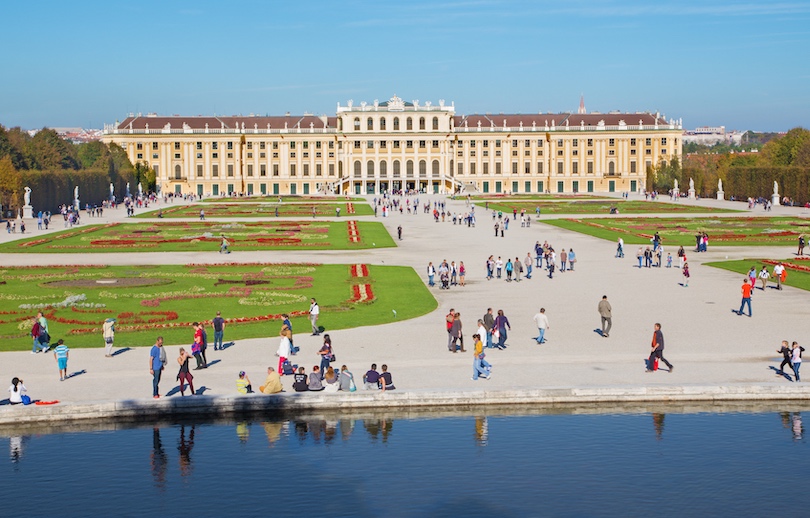
In a city rich in history and cultural significance, the Schönbrunn Palace still stands out.
During the 1700s and up until 1918, it was the principal residence of the Habsburg emperors. It also held a prominent role as the focus of both Austrian and European court life.
Throughout the years, the likes of Maria Theresa, Emperor Franz Joseph and Empress Elisabeth lived here, evidence of which you can see during a guided tour.
Serving now as one of Austria’s main tourist attractions, you can visit 40 lavishly furnished rooms, all of which have a story to tell. They include the Blue Chinese Salon, Porcelain Room, Vieux-Laque Room and Gobelin Salon. The latter of which features exquisite Brussels tapestries.
Map of Tourist Attractions in Austria
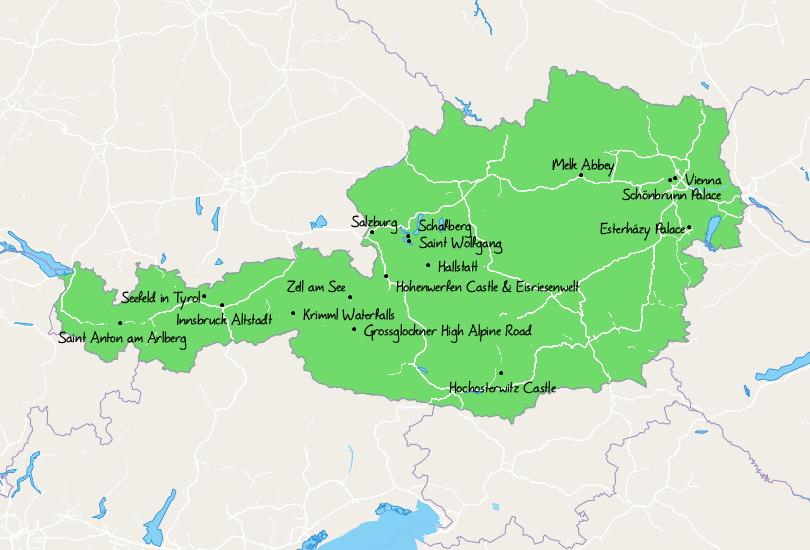
Share this post:
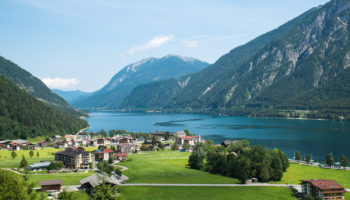
12 Most Scenic Lakes in Austria
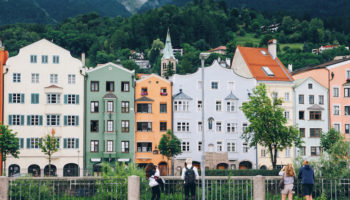
12 Best Cities to Visit in Austria
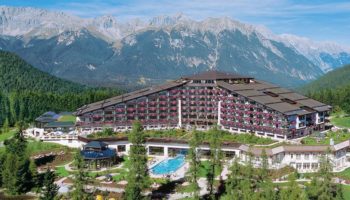
11 Most Amazing Places to Stay in Austria
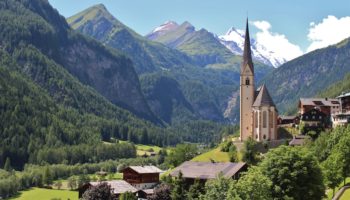
14 Most Charming Small Towns in Austria
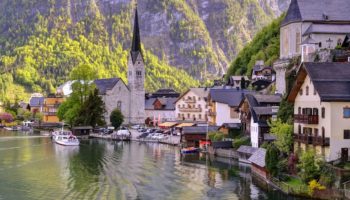
12 Best Places to Visit in Austria
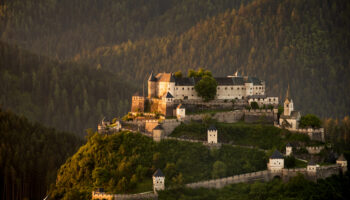
26 Mind-Blowing Castles in Austria
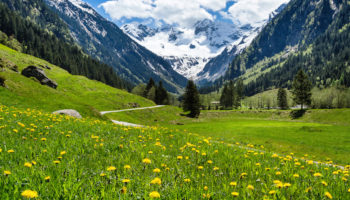
9 Most Beautiful Regions in Austria
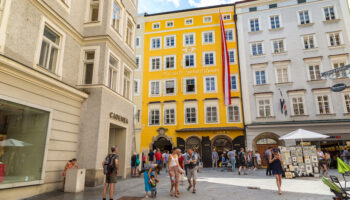
19 Top Tourist Attractions in Salzburg, Austria
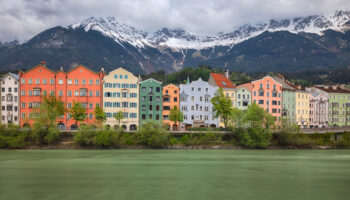
12 Amazing Things to Do in Innsbruck, Austria
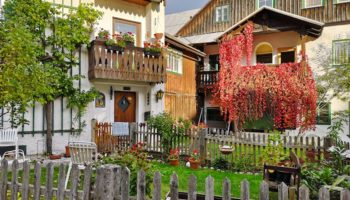
10 Best Places to Visit in Styria, Austria
Reader interactions.
February 13, 2017 at 4:11 am
Certainly would add the Salzkammergut as a region with the Sound-Of-Music attractions in Salzburg and Mondsee. Moreover, the Schafberg mountain offers spectacular views of the lake area.
March 25, 2016 at 12:28 pm
Just returned from Austria mid March,2016,and visited many of the top 10 places to see.Some were closed because they were still in winter mode and the flower beds were just being worked on and the trees around the summer castle of Marie Theresa were still wrapped and covered which took away from the grounds ..so in Dec it would be the same..having said that,Austria is a beautiful welcoming country,friendly ,safe and very ,very clean.I would go anytime of year.If you and your family are skiers,then this is the place to be..especially anywhere near Innsbruck..the scenery is breathtaking.
March 12, 2016 at 9:33 pm
Hi. We are a family of 6, we are planning a trip in the second week in Dec 2016. After reading some comments, we are contemplating whether we should proceed with the plan to Austria during that time of the year since some of the places will be closed. It would be great if someone could enlighten us on our doubt. We have wished to visit Austria for time, just couldn’t choose other period of the year to travel due to kids’ school schedule and work commitment. Thank you very much!
January 6, 2015 at 8:19 am
Hi, I am living in vienna. If you like to do it by train – thats a pretty good idea. You can visit all places very convenient by train and its not very expensive at all. I would highly recommend to take your time in Vienna, there are a lot of things to explore – depends on what you are interested in. And you dont need a car at all! You should definitely go to Salzburg and visit the castle there, also a short walk through the old town is very nice. you can get a lot of good food there after that you should catch a train to Hallstadt – its also mentioned on this site. Then you can go to Innsbruck. Its a wonderful town between mountains.
October 12, 2014 at 9:19 pm
Hi… I am planning a trip in March 2015 second half.. Could someone recommend a route? I will be starting and ending the trip in Vienna with my mother. We would like to travel by train.
August 1, 2014 at 2:14 pm
Hi anupama. It is possible but not very practical. The closest one is Budapest which is more or less OK to do. Then Salzburg is a bit of a stretch and Prague as a daily trip I would not recommend.
July 30, 2014 at 6:09 am
I am planning to visit Austria in sept/ Oct first week for 10 days, is it practical to stay at Vienna and do day trips to Salzburg, Budapest n Prague
April 13, 2014 at 9:12 am
Hi planning a trip to Austria in July 2014 can you help me with a road map and recommended accommodation thank you.
March 27, 2014 at 7:21 am
I am planning a trip to Austria and wish to see all the 10 destinations mentioned on the site, however I am unable to decide the road route and places where I need to book hotels in order to be a able to see all these attractions. I will be with my family (spouse and 1 kid) and intend to drive around Austria, can you help me with that.

Leave a Reply Cancel reply
Your email address will not be published. Required fields are marked *
This site uses Akismet to reduce spam. Learn how your comment data is processed .
Welcome to the Holiday Information Service
Our holiday experts are here to assist you with your holiday planning. Send us a message and we will get back you as soon as we can.
Please fill in fields marked with *
Give us a call Monday to Friday from 8am to noon. Outside of our office hours please drop us an email and we'll be happy to answer your questions.
Telephone: 00800 400 200 00 Österreich Werbung Vordere Zollamtsstraße 13 A-1030 Wien Wien AT
*toll-free; calls from mobile networks may incur charges
- Things to Do
- Cities and Culture
- Top 10 Sights in Austria
Austria’s Top Sights
From Vienna’s Schönbrunn Palace to Mozart’s birthplace in Salzburg, these are the top 10 attractions you should visit in Austria.
View to Schönbrunn Palace and the Gloriette Austrian National Tourist Office / Julius Silver Schloß Schönbrunn media_content.tooltip.skipped
View of the Ringstrasse from the roof of the Burgtheater Wien Tourismus / Christian Stemper media_content.tooltip.skipped
1. Schönbrunn Palace, Vienna
The Habsburgs’ summer residence is Austria’s most popular tourist attraction. Take a guided tour through the Imperial ceremonial rooms or stroll through the freely accessible gardens. Nearby, you can visit Schönbrunn Zoo, the oldest zoo in the world.
2. Ringstrasse, Vienna
Vienna’s Ringstrasse (ring road) circles the city’s first district and is home to some of the most grandiose buildings Austria’s capital has to offer. The State Opera, Parliament, City Hall, the university and more can all be seen by taking a stroll along Ringstrasse or boarding a tram.
3. Giant Ferris Wheel, Vienna
Located in Vienna’s historic Prater amusement park, the Giant Ferris Wheel gives you some of the best views over the city. Its passenger cars can be booked for private breakfasts, candle-lit dinners, and even weddings.
4. Hohensalzburg Fortress, Salzburg
First built in 1077, Hohensalzburg Fortress stands high above the city of Salzburg, a short (but steep) walk from the city centre. Inside, you will find the Princes’ Chambers with furnishing that have not been changed since the early 1500s, as well as a museum showcasing ancient suits of armour and a historic marionette museum.
5. Mozart’s Birthplace, Salzburg
When you walk through Salzburg’s Getreidegasse, a quaint, cobble-stoned shopping street that is reminiscent of centuries past, you won’t be able to miss Mozart’s birthplace at no. 9. After all, it’s one of the most popular museums in the world nowadays, showcasing the original rooms and Mozart’s musical instruments.
Salzburg City - View of the Hohensalzburg Fortress Tourismus Salzburg GmbH / Günter Breitegger media_content.tooltip.skipped
Mozart's Birthplace Tourismus Salzburg GmbH Mozart's birthplace media_content.tooltip.skipped
6. Schlossberg Hill & Clocktower in Graz, Styria
A must-do for every first-time visitor to Graz is climbing Schlossberg hill and seeing the city’s famous clocktower up close. If you don’t feel up to climbing the 260 stairs, simply take the lift (located inside the actual hill) or the Schlossbergbahn funicular. Up top, you can treat yourself to a coffee with fantastic views over the city.
7. Kunsthaus Art Museum in Graz, Styria
The Kunsthaus in Austria’s second city, Graz, attracts visitors not just with its modern art exhibitions, but with its unusual architecture: Opened in 2003, it is said to look like a “friendly alien” in the midst of Baroque architecture. With its large, tube-like "nozzles" for windows that stick out from the curved roof and its computerized lighting system, it’s a true eye-catcher in Graz’s city centre.
The clock tower at the city mountain Schlossberg in Graz Graz Tourism / Harry Schiffer Styria media_content.tooltip.skipped
8. Golden Roof in Innsbruck, Tirol
Located in the midst of the old town, Innsbruck’s Golden Roof is perhaps the city’s most famous landmark. Built in the 15th century at the behest of Kaiser Maximilian I, its 2,657 gilded shingles shine as bright as ever.
9. Swarovski Crystal Worlds in Wattens, Tirol
25 minutes outside of Innsbruck, a world of crystals awaits that has to be seen to be believed: There are 17 separate “crystal chambers”, including a giant crystal dome and an “infinity mirror room” featuring a revolving chandelier. There are stunning crystal exhibits and installations by the likes of Andy Warhol, Jean-Paul Gaultier, and Keith Haring. And outside, a cloud made out of 800,000 crystal rivals the starry night sky.
Crystal Dome (Swarovski Crystal Worlds) Swarovski Kristallwelten media_content.tooltip.skipped
10. Ars Electronica Center in Linz, Upper Austria
Talk to an android on the phone, pet a robot seal, or clone your favourite plant: The Ars Electronica Center in Linz is a unique interactive museum which lets you experience science, technology, and art up close. Its 5,100 m2 (56,000 sqft) LED façade right next to the Danube continuously changes colours, making for a nightly spectacle.
Discover Austria's Cities
City breaks in summer - your cultural 'lebensgefühl'.
City trips in Austrias cultural summer hit right at the heart. Because Austrias cities surprise, make curious – and sometimes even are addictive. #feelAustria
Vienna Travel Guide
Courtesy of Christoph Hetzmannseder | Getty Images

18 Best Things to Do in Vienna, Austria
Vienna is a city that relishes its past, and it has the attractions to prove it. The historic city center is a UNESCO World Heritage Site, and whether you're interested in the long-reigning Habsburg family; music composed by Vienna's own
- All Things To Do

Hofburg Palace Hofburg Palace
Unlike Vienna's other royal residences, Hofburg is like a city within a city. Sitting on the southwestern edge of the Innere Stadt , the 13th-century palace was the winter residence of the Habsburgs, and a center of power for some 600 years. These days, the Hofburg Palace is residence and office of the President of Austria, however extensive parts of the palace are still open to visitors.
One area of the palace is the Sisi Museum, named after Empress Elisabeth, wife of Emperor Franz Joseph, with more than 300 objects on display. The Sisi Museum offers insights both into the grandeur of the Habsburgs and into the life and death of Vienna's beloved Empress Elizabeth. You can also explore the Imperial Apartments ( Kaiserappartements ) where the royal family lived. Though Hofburg has about 2,600 rooms, only 18 are open for the public to tour. The oldest parts surround the Swiss Wing ( Schweizertrakt ), named for the Swiss guards who used to patrol the area. (Unfortunately, the silver collection is closed until further notice.)

Schönbrunn Palace Schönbrunn Palace
Originally constructed from 1696 as a grand hunting lodge, Schönbrunn Palace later became the official Hapsburg summer residence. Under the supervision of Maria Theresa (the only female Habsburg ruler), Schönbrunn evolved into an expansive paradise with ornate rooms and vast elaborate gardens comparable to King Louis XIV of France's palace at Versailles . One of the finest baroque palaces in Europe, Schönbrunn was one of the first places in Austria to be declared a UNESCO World Heritage Site, back in 1996. A tour will lead you through apartments belonging to Maria Theresa as well as Emperor Franz Joseph, his wife Elisabeth (better known as Sisi) and Archduke Franz Karl. Other highlights include the Blue Staircase, the Mirror Room and the Hall of Ceremonies. Plan to spend at least an hour in the gardens, which are connected by promenades that extend from the Gloriette, a stunning Roman-style arch overlooking a vast pool. Located within the grounds is the Tiergarten , the oldest zoo in the world.
Travelers say the grounds are beautiful, the tour is insightful and the zoo is entertaining for the whole family, but many warn about how crowded this attraction gets. Some suggest visiting first thing in the morning to avoid the congested atmosphere. Others wish there had been more information about the history within the rooms themselves.

MuseumsQuartier Wien MuseumsQuartier Wien
U.S. News Insider Tip: The area between the MuseumsQuartier and Naschmarkt – especially along and leading off Gumpendorfer Strasse – is a great place to explore for small, trendy bars and boutique stores. – Rudolf Abraham
Straddling the southwest section of the Ringstrasse, the MuseumsQuartier Wien is an enormous cultural institution comprising numerous top-notch museums. If you're even remotely interested in art, head to the Leopold Museum , which houses an exceptionally impressive collection of Austrian masterpieces dating from the 19th century to the present – including major works by Gustav Klimt, Oskar Kokoschka and Egon Schiele (it's the world's largest collection of works by Schiele). Next door, the Museum of Modern Art (aka MUMOK) is home to the national collection of 20th-century works by famed artists like Max Ernst, Rene Magritte and Andy Warhol. Adjacent to MUMOK, the Kunsthalle Wien showcases an ever-rotating collection of avant-garde exhibits featuring contemporary art.

Popular Tours

Hallstatt Day Trip from Vienna With Skywalk
(818 reviews)
from $ 149.90

Vienna Classical Concert at St. Peter’s Church
(1239 reviews)
from $ 41.39

Vienna: Skip-the-Line Schonbrunn Palace & Gardens with Guide
(190 reviews)
from $ 59.29

St. Stephen's Cathedral (Stephansdom) St. Stephen's Cathedral (Stephansdom) free
Towering above the streets of the Innere Stadt , this massive cathedral is one of the true centerpieces of Vienna. St. Stephen's has stood in this very spot since the early 13th century (having replaced an even earlier church), but little remains of this Romanesque construction aside from the Riesentor (Giant's Door) and the Heidenturme (Towers of the Heathens). The Gothic structure standing today was built in the early 1300s. It was here that Mozart was married to Constanze Weber in 1782, and it was here that the great composer's funeral was held in 1791. Despite parts of it being heavily damaged by fire in the final year of World War II, it was painstakingly repaired. Today this stunning cathedral remains an active house of worship, a national icon and a top tourist attraction.
After you've toured the main section, head underground to the catacombs where you'll find the tombs of members of the Habsburg royal family, along with various cardinals, archbishops and victims of the Great Plague of Vienna. Before you leave, you should climb the 343 steps to the top of the South Tower, from where you'll be treated to a spectacular view. Or use the elevator to reach the lookout terrace at the lower, never-completed North Tower, which is also home to the largest church bell in Austria, known as Pummerin. Visitors call this one of those "must-visit" attractions in Europe, praising the gorgeous church and its surroundings.

Museum of Fine Arts (Kunsthistorisches Museum) Museum of Fine Arts (Kunsthistorisches Museum)
The works at the Kunsthistorisches Museum , or Museum of Fine Arts, range from ancient Egyptian and Greek objects to masterpieces by numerous European masters, including Titian, Velasquez, Van Dyck and Rubens. In fact, the collection here is so extensive that many people say the walls of the Hofburg Palace look bare in comparison. The building itself, which opened to the public in 1891, impresses travelers as well; its facade features ornate sculptures.
Recent travelers appreciated the wide range of work on display at this museum and note just how large the building is and how much art is held within. A few suggested breaking up the day with a quick cup of coffee at the on-site coffee shop, which is in the museum's beautiful domed hall.

Belvedere Palace (Schloss Belvedere) Belvedere Palace (Schloss Belvedere)
If you can't get your art fix at either the MuseumsQuartier or the Kunsthistorisches Museum , you're sure to find satisfaction at the Belvedere. There are actually two palaces here – separated by an ornate 17th-century French-style garden – which some say are among the best examples of Baroque architecture in the world. Formerly home to such notable Austrian figures as Prince Eugene of Savoy and Archduke Franz Ferdinand, the buildings now house an outstanding array of Austrian art from such renowned artists as Gustav Klimt (including his famous painting "The Kiss"), Egon Schiele and Oskar Kokoschka. It's in the Upper Palace that you'll find works by these and other artists from the permanent collection, while the Lower Palace houses temporary exhibitions. A third, modern building, Belvedere 21, acts as an arts and performance venue and is located just across the main road. It has just a few exhibits on at any given time. Travelers love the gardens, ornate buildings and array of paintings on display at this attraction. Many warn of large crowds.
The Belvedere sits just southeast of the Innere Stadt, between the Wieden and Landstrasse districts. It is open every day from 9 a.m. (Upper Belvedere) and 10 a.m. (Lower Belvedere) to 6 p.m. When purchased online, entrance to both sites costs 24 euros (about $26) for adults. Youths 18 and younger always explore for free. You should definitely book tickets online, as entry is limited by time slots and these do sell out. For Belvedere 21, you only need to specify the day of your visit, not the time. Guided tours are available and there are a variety of combo ticket packages available as well. For more information, visit the palace's website .

Leopold Museum Leopold Museum
Part of the excellent MuseumsQuartier Wien , the Leopold Museum houses one of greatest collections of Austrian art anywhere in the world. Along with major works by the likes of Gustav Klimt, Oskar Kokoschka, Richard Gerstl and Max Oppenheimer, the Leopold Museum includes the world's largest and most comprehensive collection of works by Egon Schiele.
The main part of the museum is the permanent exhibition, Vienna 1900, which takes you through the most important artistic developments and changes in Vienna around the end of the 19th and beginning of the 20th centuries, the last decades of the Habsburg rule. If you only have time to visit one museum to see works from the Viennese Secession (the local style of art nouveau), the Leopold Museum gives the best overview. Visitors commented on the exceptional quality of the artworks on display, the clear and spacious layout of the museum, and the pleasant café.

Austrian National Library Austrian National Library free
On one side of the Hofburg 's Neue Burg wing, and entered off Josefsplatz, is the Austrian National Library. The main reason to come here is the spectacular State Hall ( Prunksaal ), built for Emperor Charles VI in the 1720s, as the former Court Library. The State Hall was painstakingly restored in 2022.
Forget any ideas of what a library looks like – the Prunksaal is a baroque masterpiece. Some 80 meters (around 262 feet) long and 20 meters (about 66 feet) high, the State Hall is lavishly decorated with stucco, marble and gilding. A statue of Charles VI stands in the center of the hall, likely the work of Venetian sculptor Antonio Corradini. There are more than a dozen other statues in the hall of Austrian dukes and Habsburg rulers, by the Strudel brothers (one of whom, Paul Strudel, also worked on Vienna's Plague Column or Trinity Column, erected as a memorial after the Great Plague in 1679). The hall also contains four enormous Venetian globes. Perhaps most impressive however is the soaring oval dome, 30 meters (98 feet) high and decorated with breathtaking frescoes by the Habsburg court painter Daniel Gran, whose other work includes frescoes at the famous Klosterneuburg Abbey.

Vienna: Skip the Line Schönbrunn Palace and Gardens Guided Tour
(950 reviews)
from $ 60.41

Historic Center of Vienna Walking Tour
(1038 reviews)
from $ 81.66

Vienna Mozart Concert in Historical Costumes at the Musikverein
(665 reviews)
from $ 66.00

Museum Judenplatz Museum Judenplatz
U.S. News Insider Tip: Make a point of visiting the excellent Sigmund Freud Museum, housed in Freud's former apartment and practice. It's less than a mile north of Judenplatz. – Rudolf Abraham
Judenplatz earned its name back in the 13th century when it was first designated as the Jewish Ghetto. For two centuries, this neighborhood remained the epicenter of Jewish life in Vienna, an identity that still lives among the exhibits found at the Museum Judenplatz. This small yet effective branch of the Jewish Museum Vienna (located a little south of Judenplatz) details the role Viennese Jews played in the development of city life and the persecution and expulsion of the Medieval Jewish community on the 1420s.

Café Central Café Central
One of the most famous coffee houses in Vienna, Café Central was established in 1876. Right up until the eve of the Second World War, this landmark spot was a favorite meeting place of Vienna's poets and intellectuals (many of whom were Jewish). Sigmund Freud and some of Austria's most famous writers including Stefan Zweig, Peter Altenberg and Arthur Schnitzler – not to mention Russian revolutionary Leon Trotsky – frequented the cafe's tables. Given its former clientele, you can guess the cafe is an incredibly grand and atmospheric place – not somewhere you order a coffee to-go. Café Central occupies the ground floor of a magnificent building, awash with ornate decoration and Italian flourishes, which was originally home to the stock exchange and central bank.
Along with plenty of delicious cakes and pastries, Café Central serves classic Austrian dishes such as Wiener schnitzel and Tafelspitz (boiled beef in broth). Try the house sandwich (organic turkey-ham and mozzarella, served warm). They also have some vegetarian and vegan dishes on the menu. Recent travelers commented on the beautiful setting, impeccable coffee, top-notch service and excellent pastries.

Naschmarkt Naschmarkt free
U.S. News Insider Tip: Along with all the food stalls and multiple options for late night or Asian-infused dining, the Naschmarkt area is one of the city's best for LGBTQ+-friendly bars. – Rudolf Abraham
Every Monday through Saturday, hundreds of vendors flock to this vibrant market in the Mariahilf District – located just south of the Ringstrasse – to sell fresh fruit and vegetables, meat, dairy products and other local food items. This open-air extravaganza, Naschmarkt, is considered one of the largest of its kind in Austria, and it's a great intro into everyday life in Vienna. There has been a market here since at least the late 18th century. In addition to the food stalls, you'll find small eateries and cafés throughout.

House of Music (Haus der Musik) House of Music (Haus der Musik)
Vienna has long been a musical epicenter. It was here that renowned composers, such as Mozart, Beethoven, Haydn, Mahler, Bruckner and Strauss lived, composed and performed at various points in their careers. If this history entices you, you must visit the House of Music ( Haus der Musik ) during your time in the city. This small but fascinating museum showcases the works of Vienna's elite musicians with displays featuring manuscripts and sound bites. Exhibits also explain the evolution of sound and the mechanics behind our ability to hear. Plus, there's an entire floor dedicated to the Vienna Philharmonic where you can even use a virtual wand to conduct the musicians. (But be careful: If you mess up they may ridicule you!) It's a great place to visit with kids, too. The facility also hosts a variety of concerts.
Travelers say if you're a classical music fan (or even a fan of the science of sound), a visit to the House of Music should be a priority. They also enjoy all the interactive elements.

St. Peter's Catholic Church St. Peter's Catholic Church free
St. Peter's Catholic Church ( Peterskirche ), which stands in the heart of the Inner Stadt close to St. Stephen's Cathedral , is one of most outstanding examples of baroque architecture in Vienna. Consecrated in 1733, it was built on the site of an earlier, Romanesque church first mentioned in the 12th century, which was destroyed by fire in the 1660s. It, in turn, probably stood on the site of an even earlier church, which sat upon the site of Roman Vindobona. Today's church makes up for its relatively compact size with its soaring dome and exceptionally lavish decoration.
The richly decorated interior features a gilded pulpit by Matthias Steinl (one of the leading baroque artists on Austria), and a magnificent baroque organ (with more than 2,000 pipes). The show-stealer however is the dazzling fresco cycle beneath the dome, the work of Johann Michael Rottmayr. Outside the church there's a relief from 1906 depicting the legendary founding of the church by Charlemagne. Travelers commented on the beauty of the decoration, and the surprising opulence of the interior compared to the relatively simple exterior. Stepping into the church always comes as a rather breathtaking surprise.

Countryside Half Day Wine Tour near Vienna
(283 reviews)
from $ 139.83

Big Bus Vienna Hop-On Hop-Off Sightseeing Tour by Open-Top Bus
(1477 reviews)
from $ 34.68

Private Day Tour Trip Salzburg Hallstatt and Melk from Vienna
(176 reviews)
from $ 849.07

Vienna's Tiergarten Vienna's Tiergarten
It began in 1752 as an exotic menagerie amassed by Franz Stephan, the husband of Maria Theresa (the only female Hapsburg ruler) and the country's Holy Roman Emperor. Today, Vienna's Tiergarten (also known as Schönbrunn Zoo or Vienna Zoo) is the oldest zoo in the world, home to about 750 animal species (around 8,500 animals total) ranging from tigers to lemurs – and most famously, pandas (it's one of the few zoos outside China to have these rare animals). The zoo hosts special tours and there are daily feedings that visitors can watch, with animals like orangutans, elephants, penguins and otters.
Since its founding, Tiergarten has undergone many a renovation to bring it up to par with modern facilities. Travelers say that while the cost of admission is on the pricey side, it's worth it to see the variety of animals and impressive facilities at this zoo.

Vienna State Opera (Staatsoper) Vienna State Opera (Staatsoper)
U.S. News Insider Tip: Don't miss the landmark Secession Building, just a short walk from the Vienna State Opera. Head down to the basement to see Klimt's amazing "Beethoven Frieze," while listening to Beethoven's "Ode to Joy" from the Symphony No. 9 on headphones provided. – Rudolf Abraham
Since 1869, the Vienna State Opera has been the city's premier venue for the performing arts and a major focal point of Viennese life. One of the world's greatest opera houses, the Staatsoper still hosts top-notch performances (and each seat has its own small subtitles screen), and you can also tour this magnificent building on a guided tour. The 40-minute tours run every day (times vary depending on the performance schedule) and allow you a behind-the-scenes look at this beloved landmark. Tours come highly recommended by previous visitors.

Burggarten Burggarten free
Behind the Neue Burg wing of the Hofburg , the Burggarten is a charming city park. It was originally created in the wake of Napoleon's withdrawal from Vienna in 1809 as a private garden for the imperial family. Completed around 1819, it wasn't opened to the public until 100 years later – in 1919 – following Emperor Franz Joseph I's death in 1916.
As well as being a beautiful and peaceful place to take a break from sightseeing, the Burggarten is also home to the Mozart Monument. Unveiled in 1896, this famous monument originally stood in front of the Albertina Palace, but was damaged by bombing during World War II. After restoration it was relocated to the Burggarten. The monument is a top Vienna photo-op, especially in spring when the flowerbeds are in bloom, which are shaped like a large treble clef. Other statues in the Burggarten include one of Emperor Franz Josef.

Spanish Riding School Spanish Riding School
The Spanish Riding School, part of the Hofburg Palace complex, is one of the most celebrated riding academies in the world. It carries on a 450-year-old tradition of classical dressage (meticulous, careful training to achieve almost balletic movements and perfect harmony between horse and rider), featuring the beautiful white Lipizzaner horses (the younger animals are grey) which go through years of training. The stud farm is located in the village of Piber, southwest of Vienna.
Performances and Morning Exercise sessions take place in the Winter Riding School – built under Charles VI in the 1720s and 1730s – and are accompanied by classical music. During a Performance, you can see the horses and riders at the epitome of their technique, whereas the Morning Exercises are training sessions and include younger horses as well as the fully trained stallions. Guided tours are also available. Regular tours take in all the main areas, including the stables and the Winter and Summer Riding Schools, and last an hour. The 80-minute Architectural tours explore the baroque style of the Winter Riding School and takes you up into its elaborate, wooden roof structure.

Maria-Theresien-Platz Maria-Theresien-Platz free
Named after the Empress Maria Theresa, this large square framed by grand architecture lies between the Hofburg Palace and the MuseumsQuartier , alongside the busy Ringstrasse. The only female Habsburg ruler, Maria Theresa was empress from 1740 to 1780, a challenging period for the Habsburg monarchy which began with territorial losses and political conflict. However, Maria Theresa proved herself by leaving the empire a stronger and more stable one than the one she inherited. During her lifetime she instigated a wide range of reforms from agriculture and education to medicine and the military.
A huge monument to Empress Maria Theresa stands at the center of the square, dating from the late 19th century. The prominent neo-baroque sculptor Kaspar von Zumbusch spent more than a decade working on the project. The bronze sculpture of the Empress sits enthroned on top of a granite plinth and pedestal, above sculptures of her advisors, administrators, military commanders and figures from the sciences and arts (including Mozart as a child). The imposing monument stands more than 62 feet (the figure of Maria Theresa alone is nearly 20 feet tall). Travelers say the structure is beautiful but you won't need much time for the square itself.

Skip-the-Line Sisi Museum, Hofburg and Gardens Tour Vienna
(131 reviews)
from $ 61.42

Schönbrunn Palace Concert in Vienna
(691 reviews)
from $ 61.53

Danube Valley Day Trip from Vienna
(1524 reviews)
from $ 126.41
Explore More of Vienna

Best Hotels

When To Visit
If you make a purchase from our site, we may earn a commission. This does not affect the quality or independence of our editorial content.
Recommended
The 28 Best Water Parks in the U.S. for 2024
Holly Johnson|Timothy J. Forster May 8, 2024

The 18 Best Napa Valley Wineries to Visit in 2024
Lyn Mettler|Sharael Kolberg April 23, 2024

The 25 Best Beaches on the East Coast for 2024
Timothy J. Forster|Sharael Kolberg April 19, 2024

The 50 Best Hotels in the USA 2024
Christina Maggitas February 6, 2024

The 32 Most Famous Landmarks in the World
Gwen Pratesi|Timothy J. Forster February 1, 2024

9 Top All-Inclusive Resorts in Florida for 2024
Gwen Pratesi|Amanda Norcross January 5, 2024

24 Top All-Inclusive Resorts in the U.S. for 2024
Erin Evans January 4, 2024

26 Top Adults-Only All-Inclusive Resorts for 2024
Zach Watson December 28, 2023

Solo Vacations: The 36 Best Places to Travel Alone in 2024
Lyn Mettler|Erin Vasta December 22, 2023

26 Cheap Beach Vacations for Travelers on a Budget
Kyle McCarthy|Sharael Kolberg December 4, 2023


IMAGES
COMMENTS
Find the best sightseeing opportunities and things to do with this list of the top tourist attractions in Austria. On This Page: 1. The Vienna Hofburg: Austria's Imperial Palace. 2. Salzburg Altstadt, a UNESCO World Heritage Site. 3. The Spanish Riding School, Vienna. 4. Schönbrunn Palace, Vienna. 5. Innsbruck's Hofburg and Hofkirche. 6.
Imagine Austria and your mind might well drift to the lavish palaces and coffeehouses of Vienna, the snow-white peaks of the Tyrolean Alps, the river romance of the Danube and Mozart symphonies ringing out in the baroque concert halls of Salzburg.
In order to help guide you in building a list of things to do, below are some of the top tourist attractions in Austria that are sure to make your trip extra special. St. Wolfgang is a beautiful market town within Salzkammergut, Austria’s famous Lake District.
From Vienna’s Schönbrunn Palace to Mozart’s birthplace in Salzburg, these are the top 10 attractions you should visit in Austria.
Things to Do in Austria, Europe: See Tripadvisor's 2,876,228 traveler reviews and photos of Austria tourist attractions. Find what to do today or anytime in August. We have reviews of the best places to see in Austria. Visit top-rated & must-see attractions.
From touring Schönbrunn Palace to seeing a performance at the Vienna State Opera house, these are the top things to do in Vienna Austria.